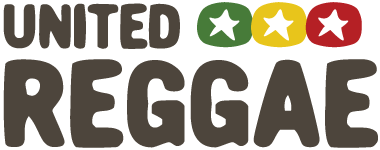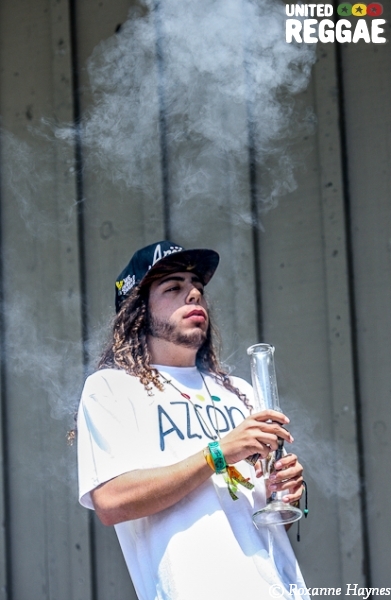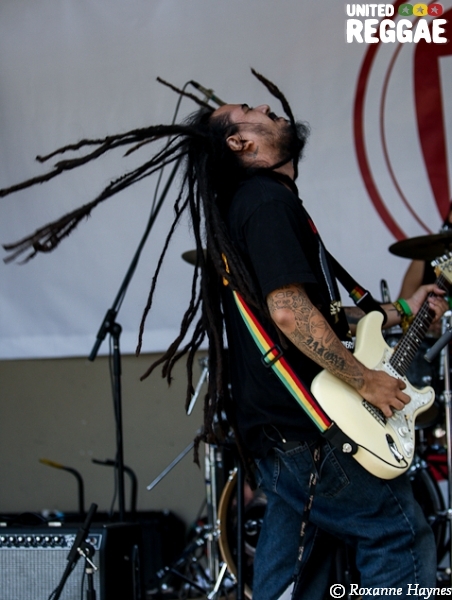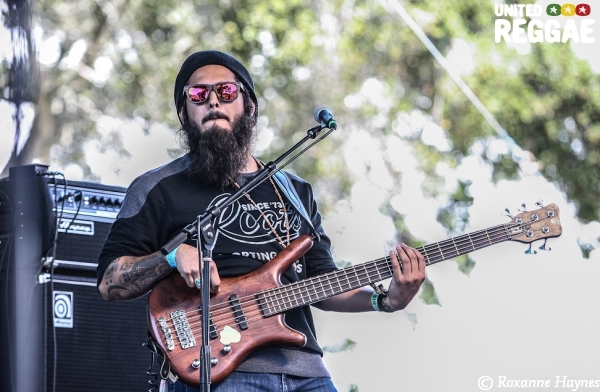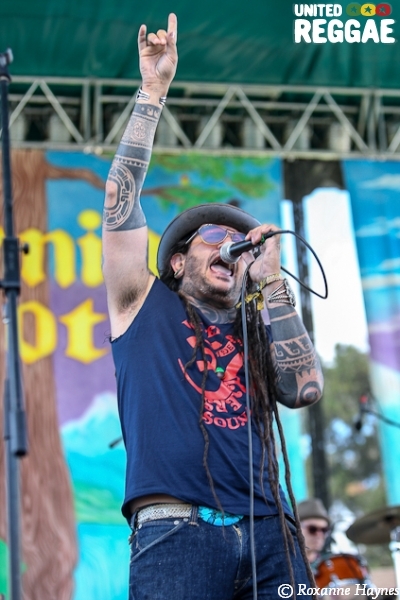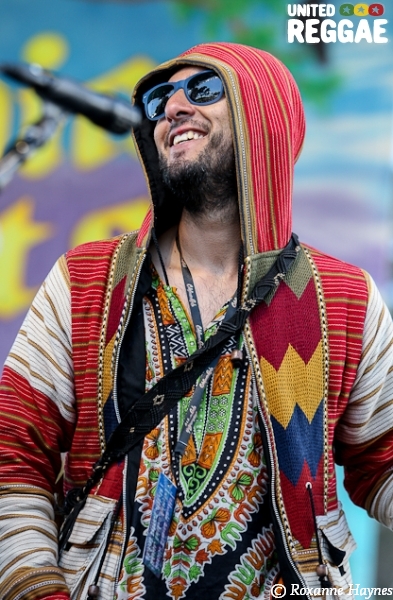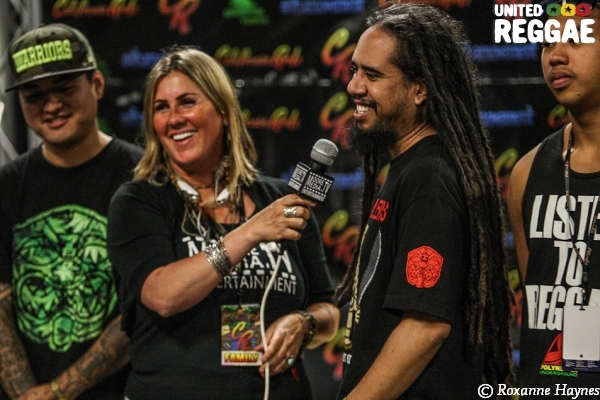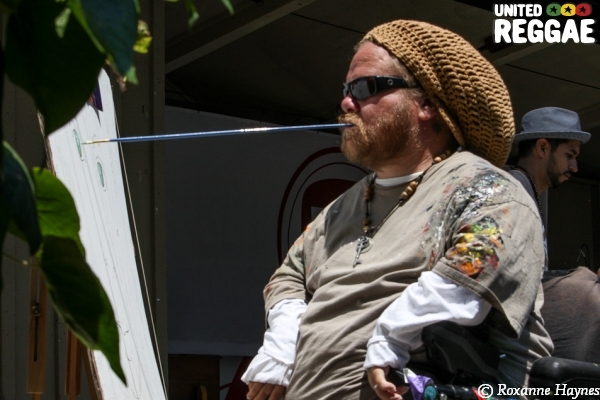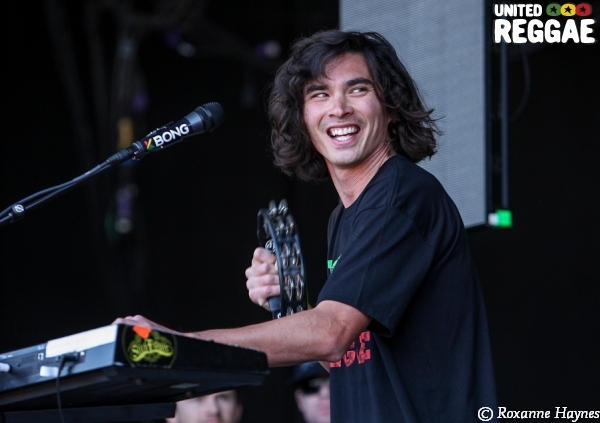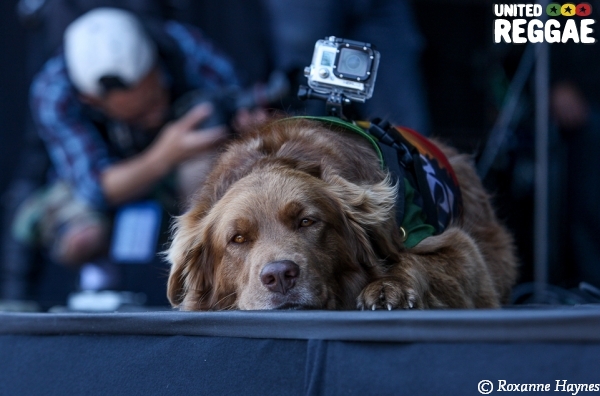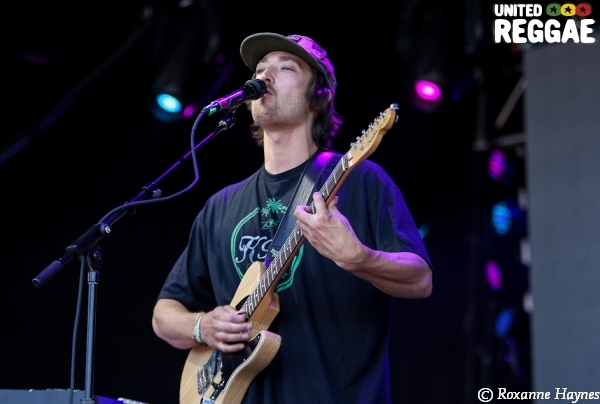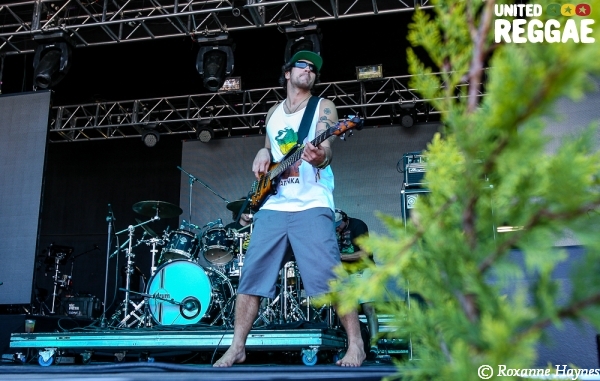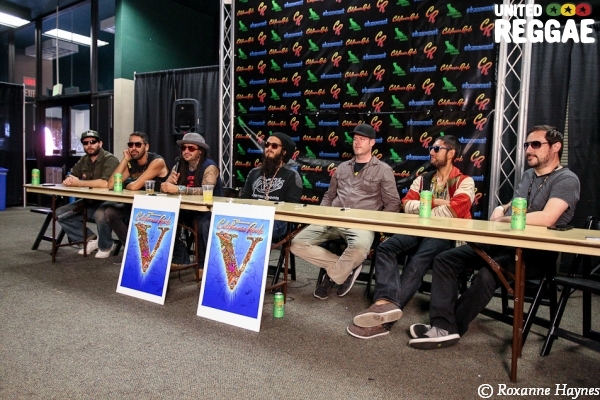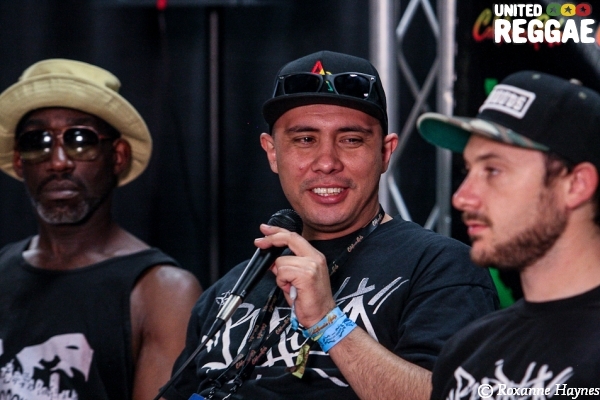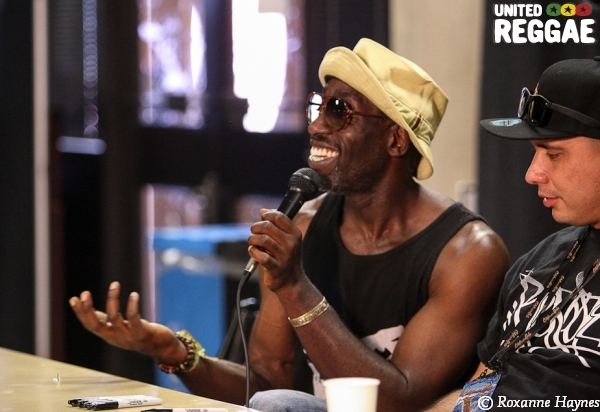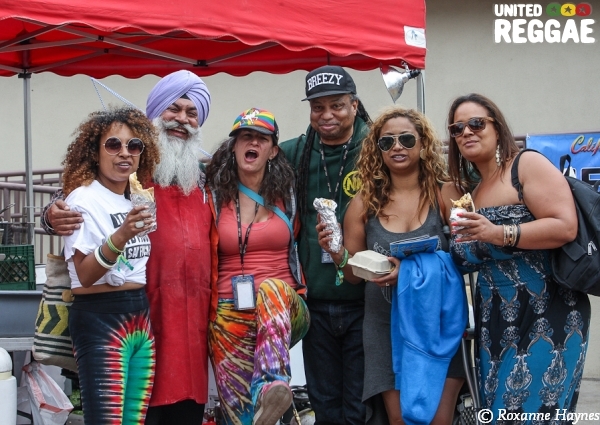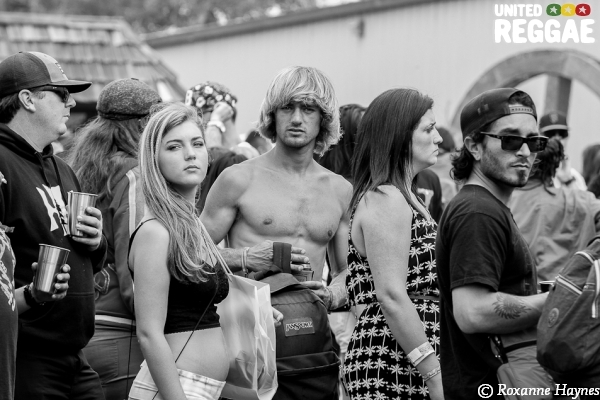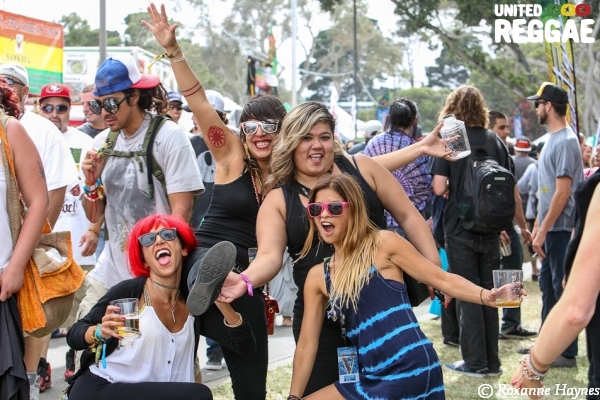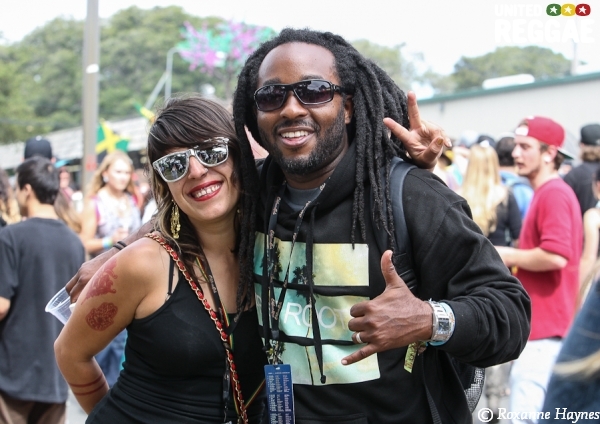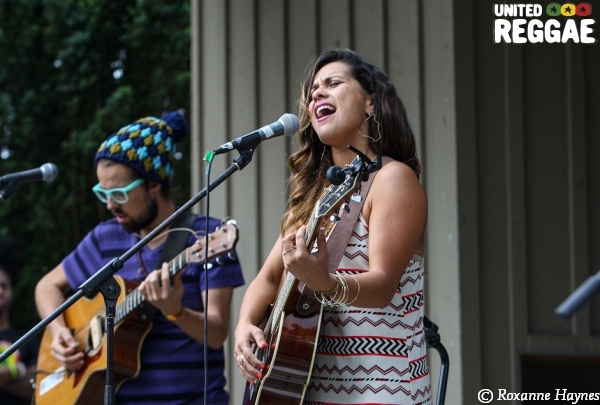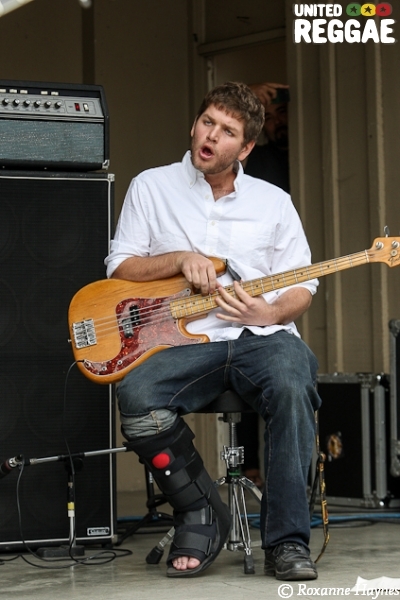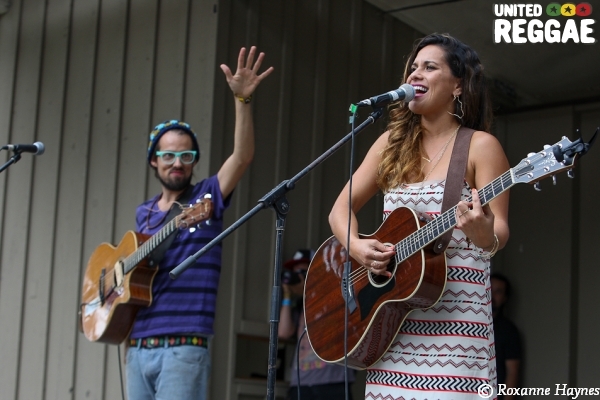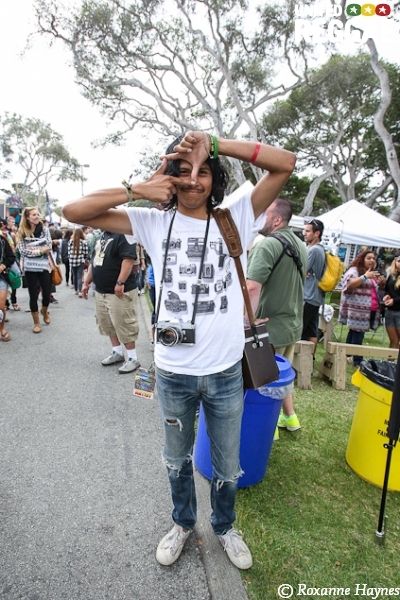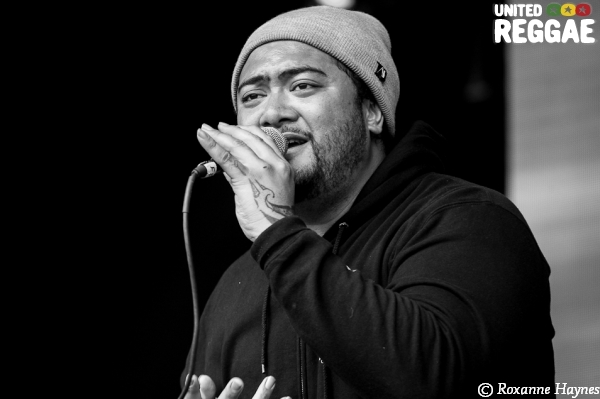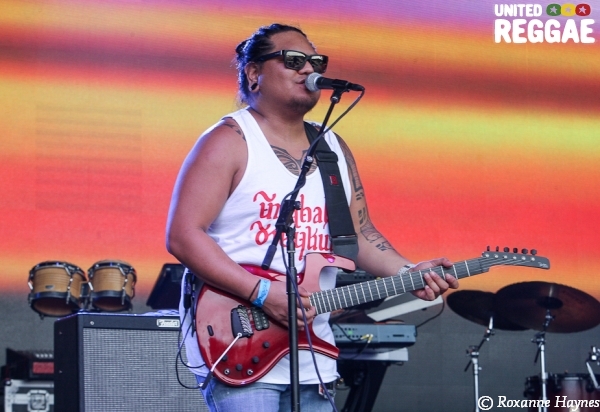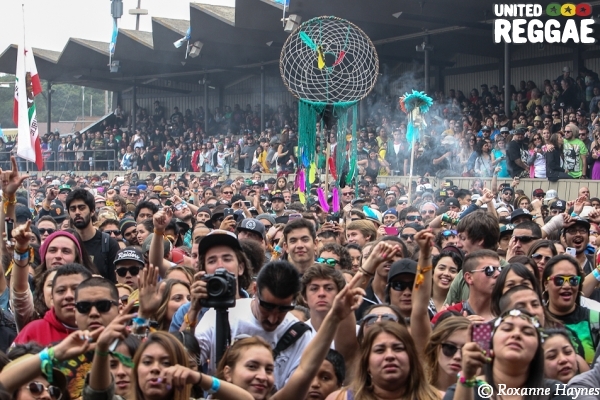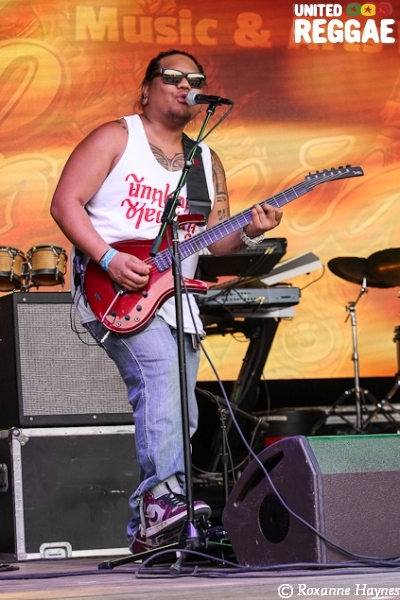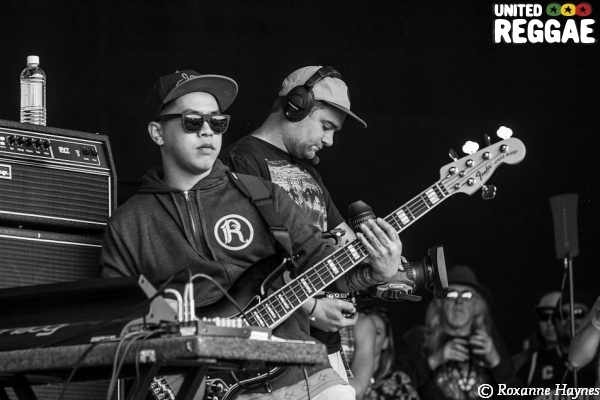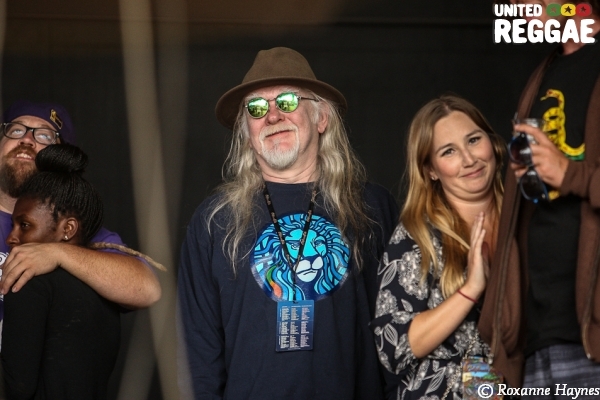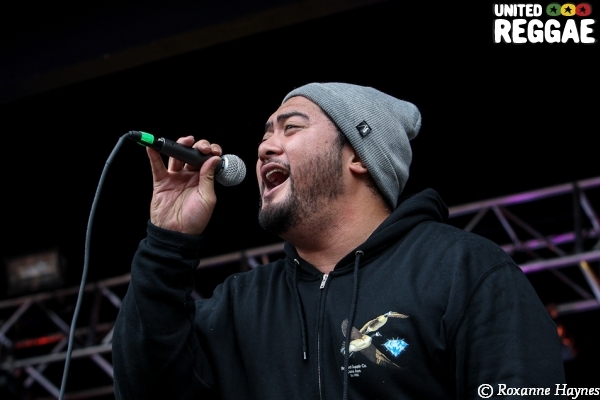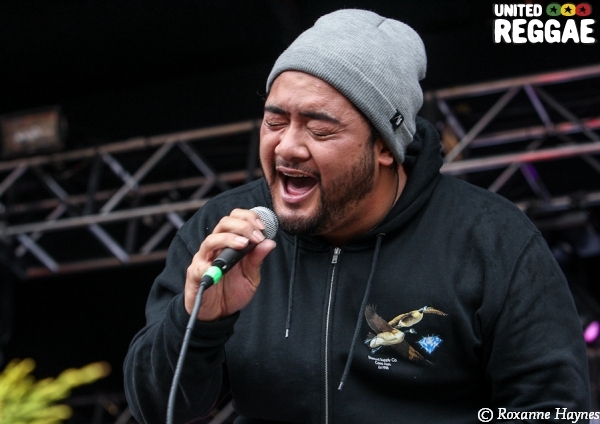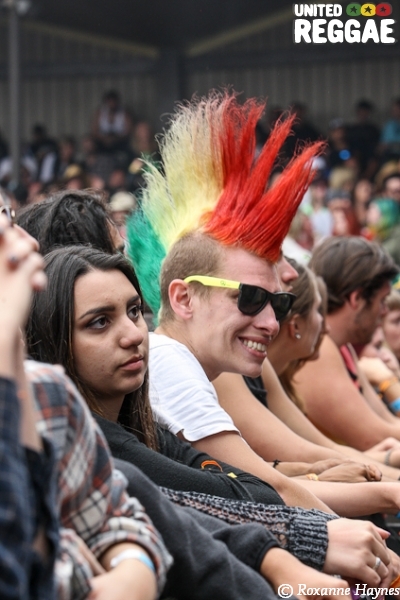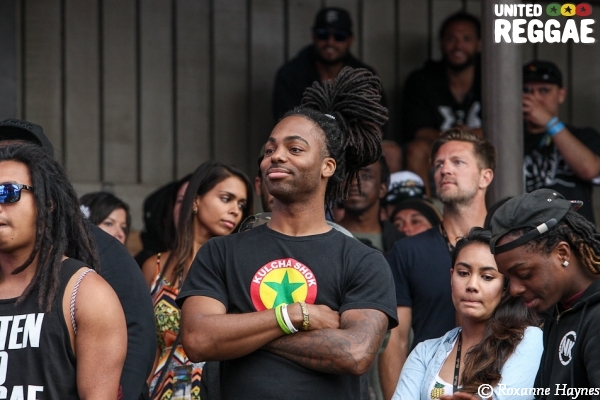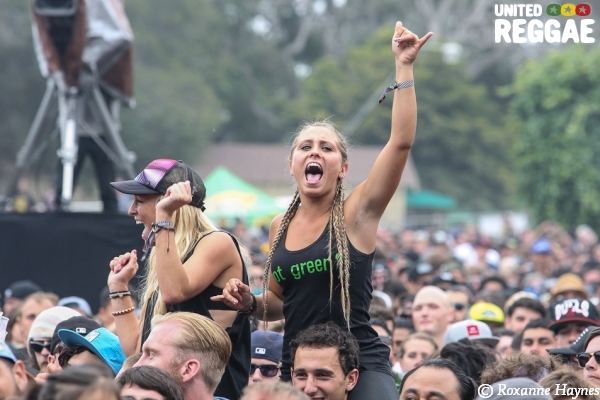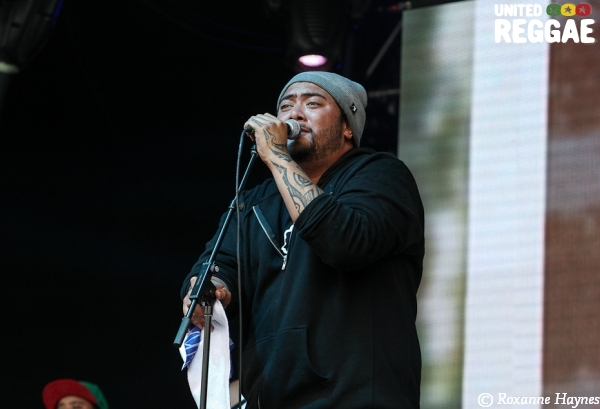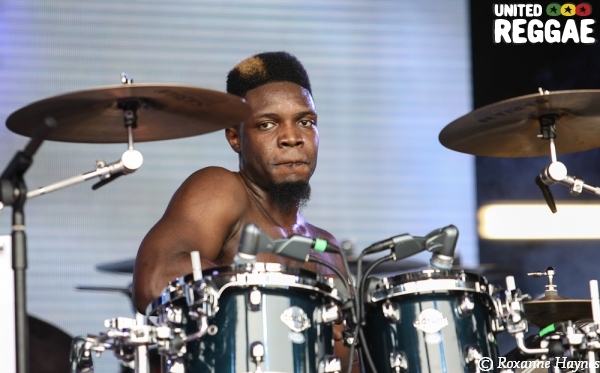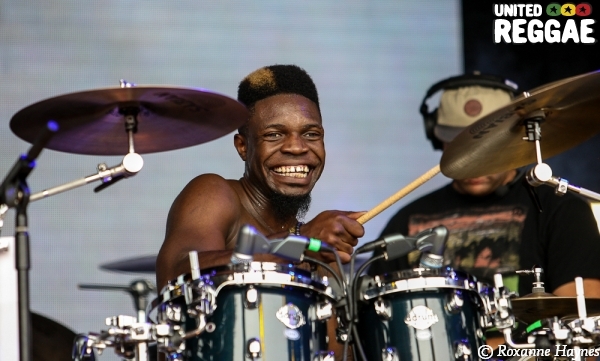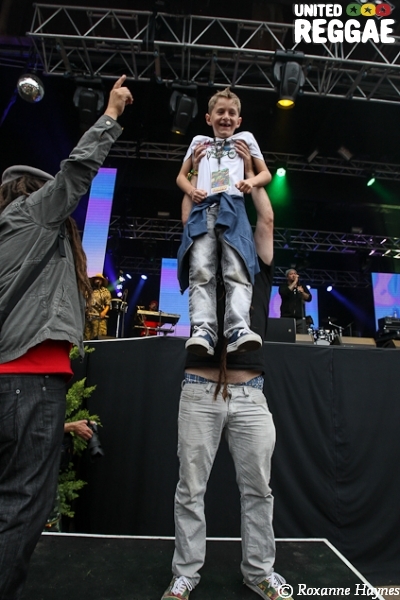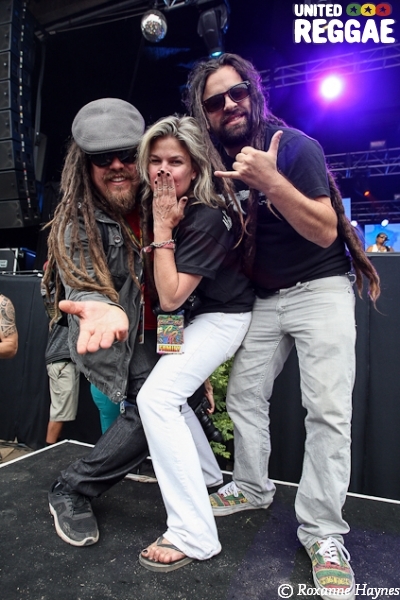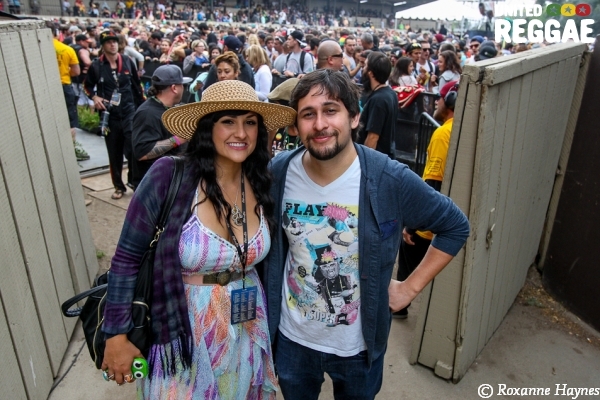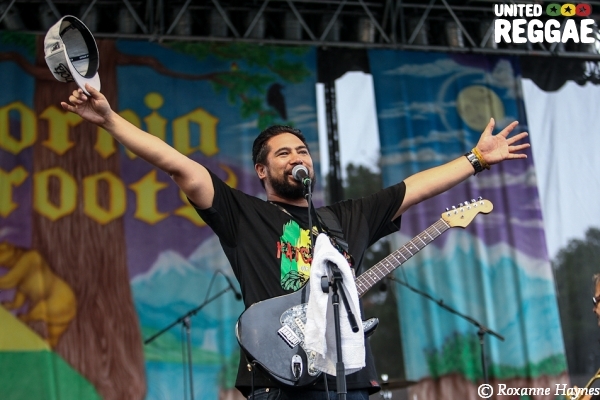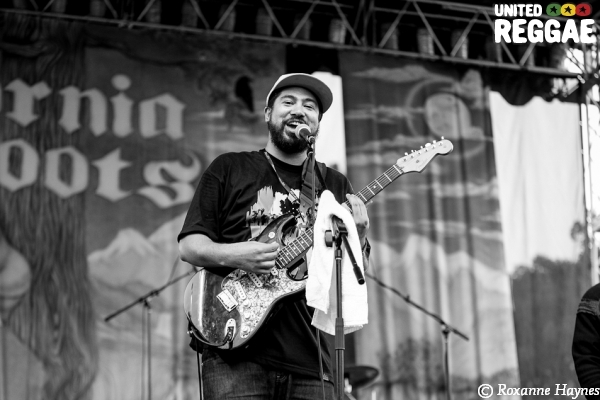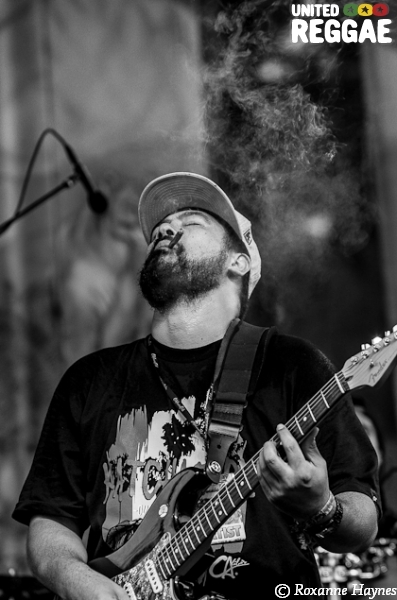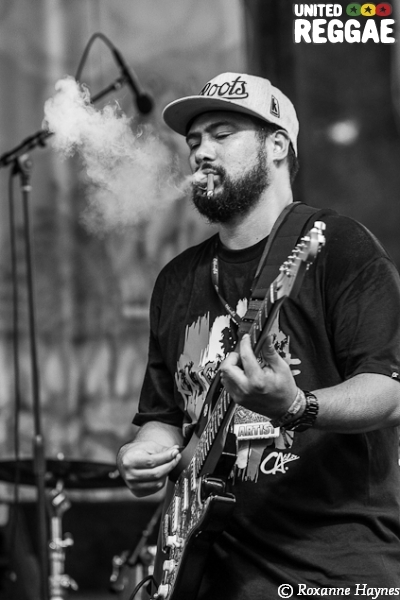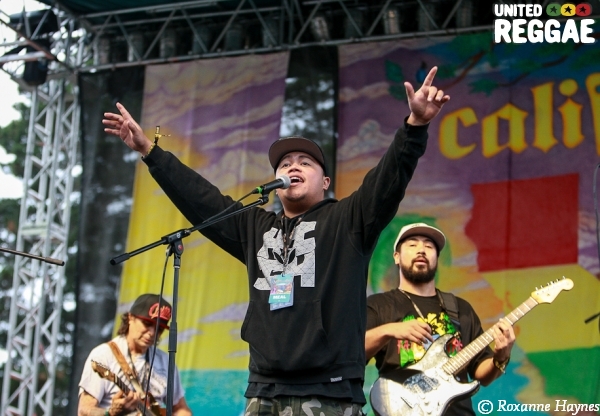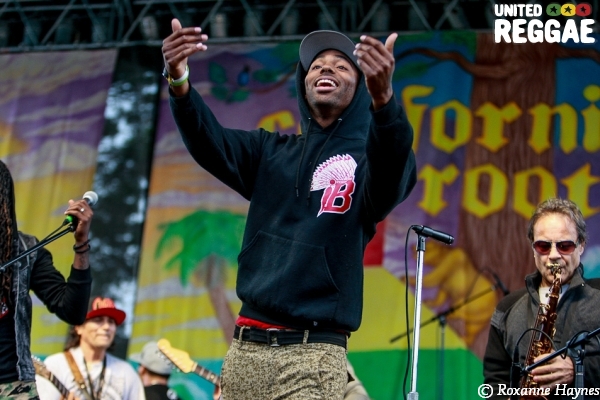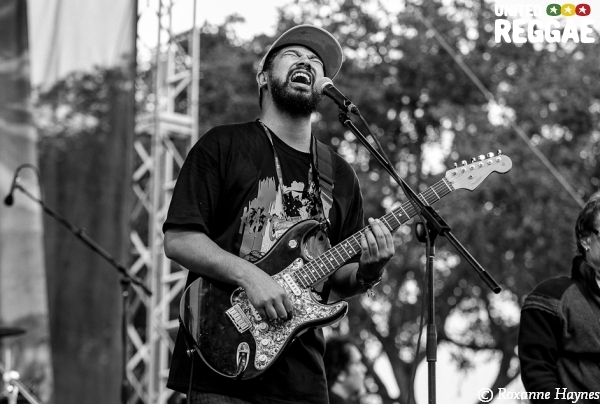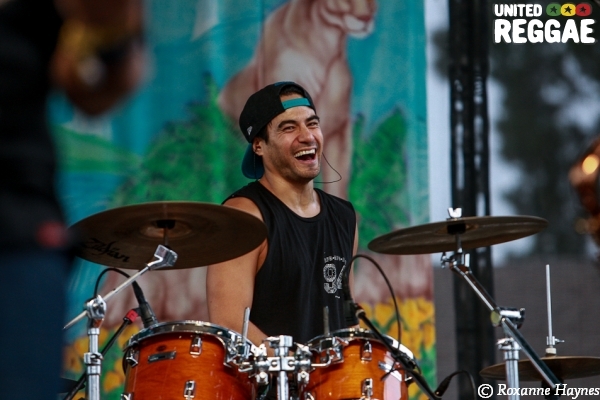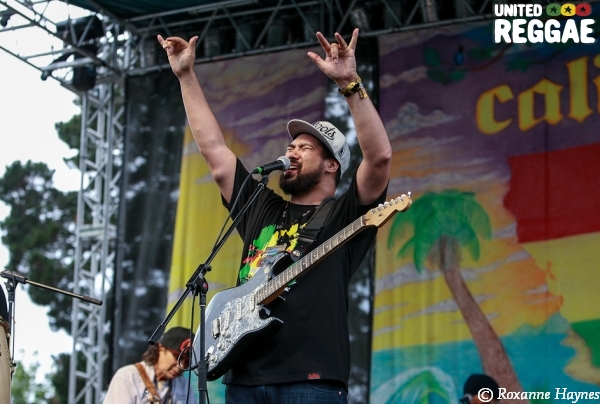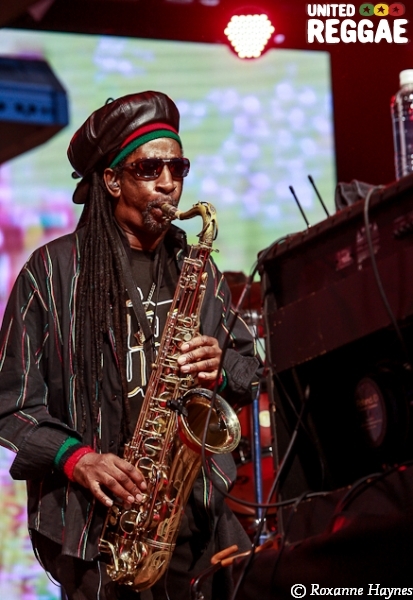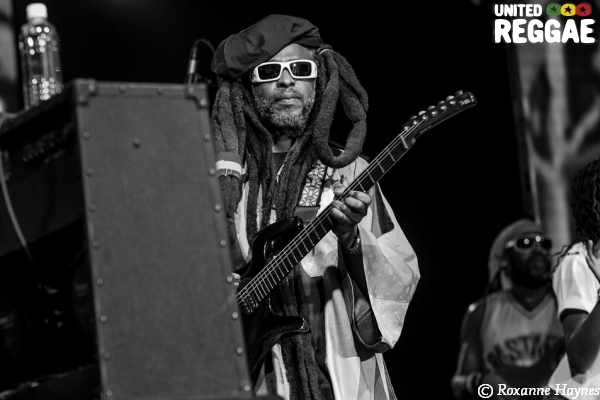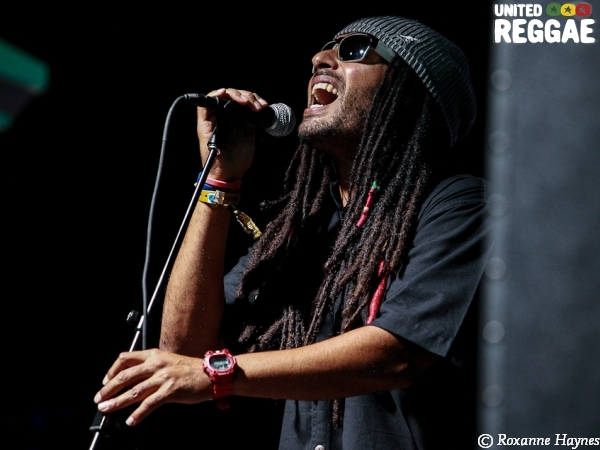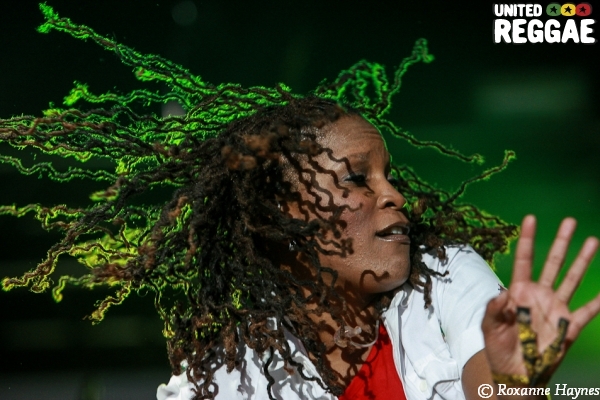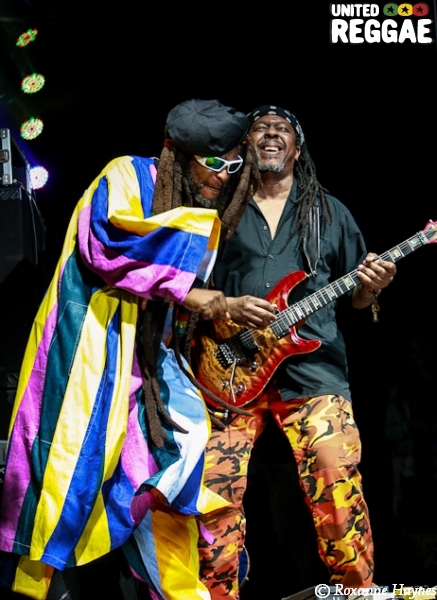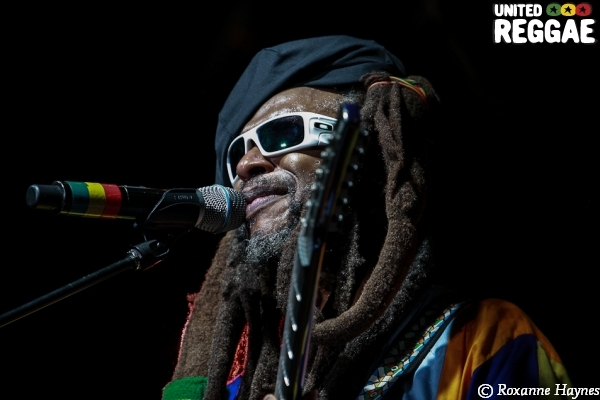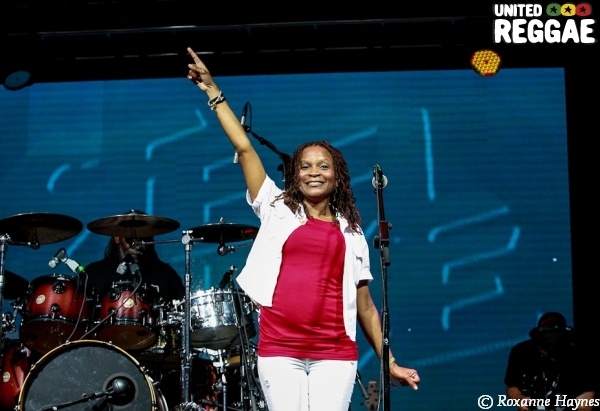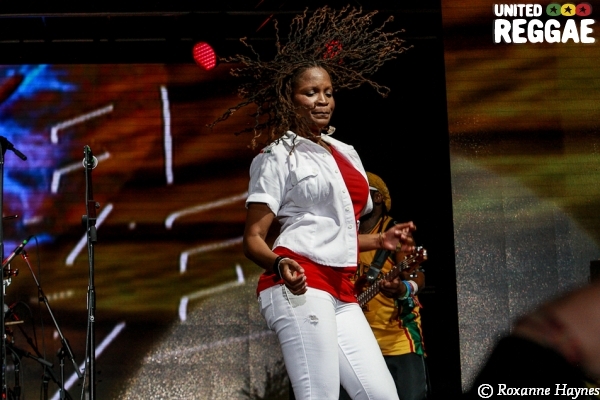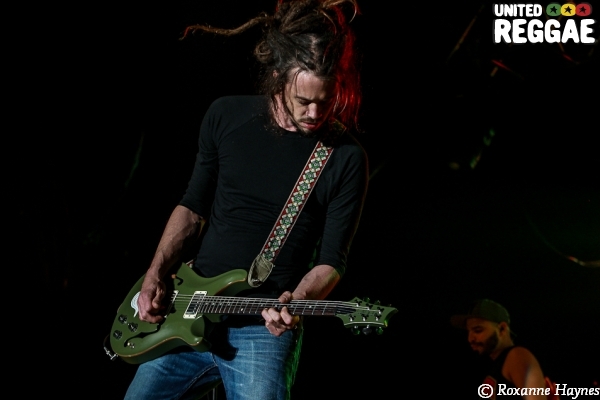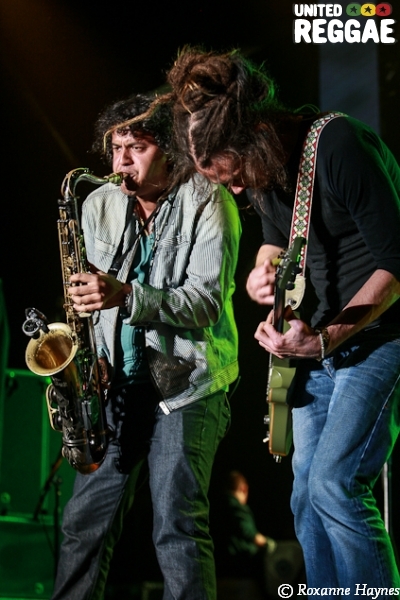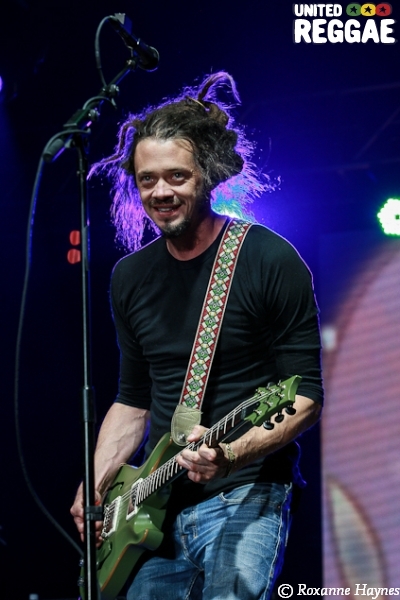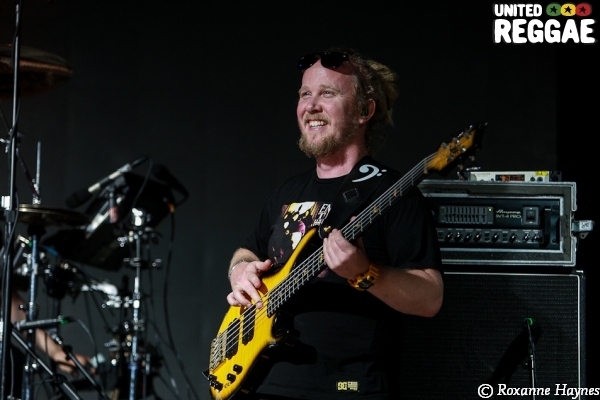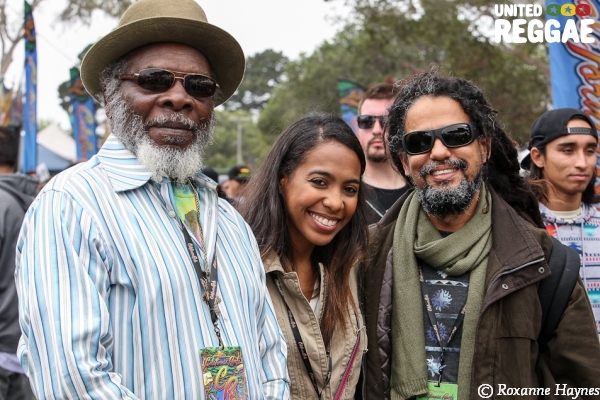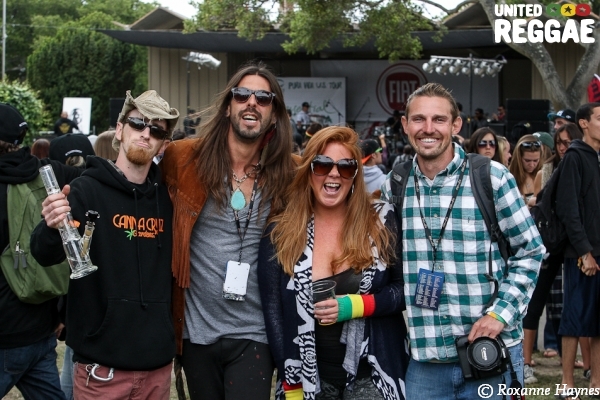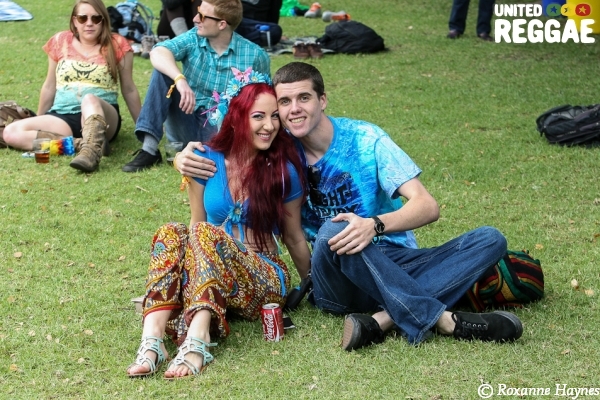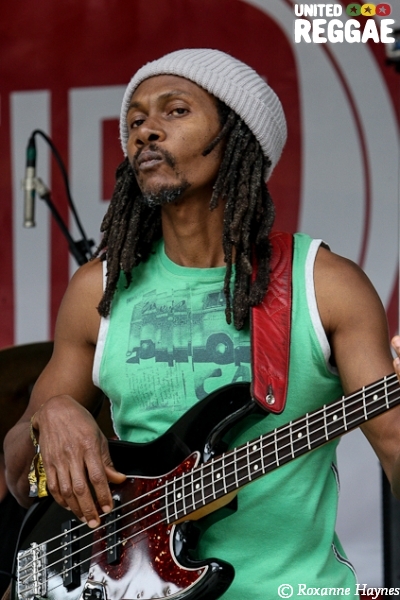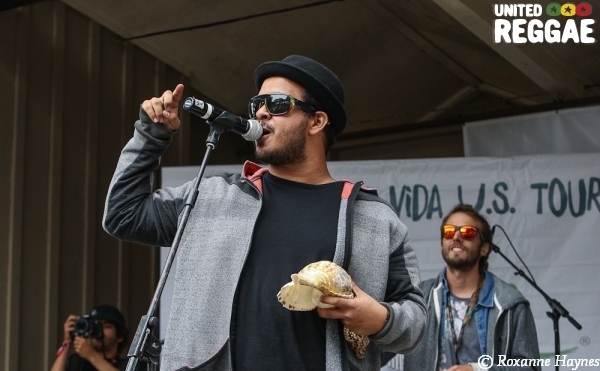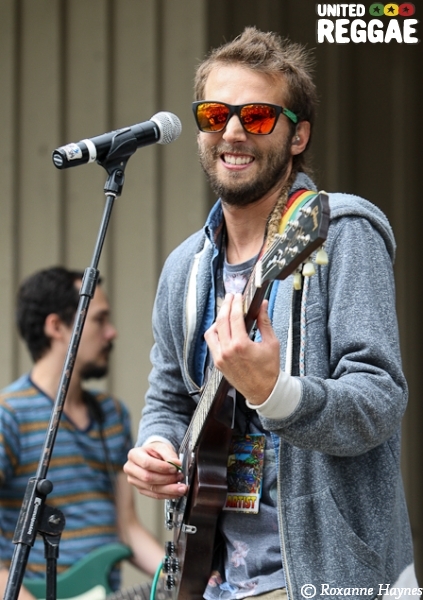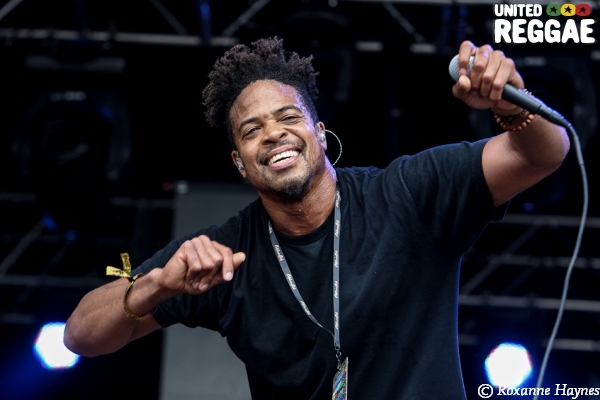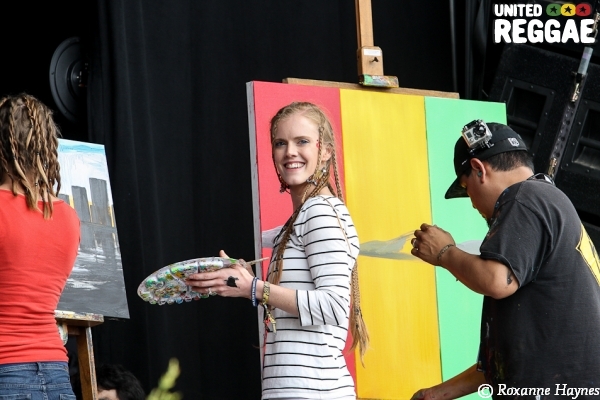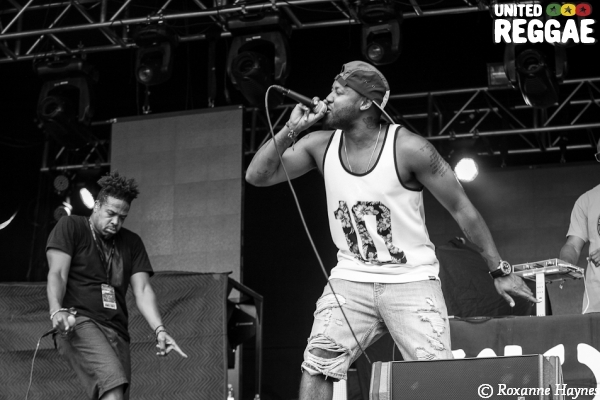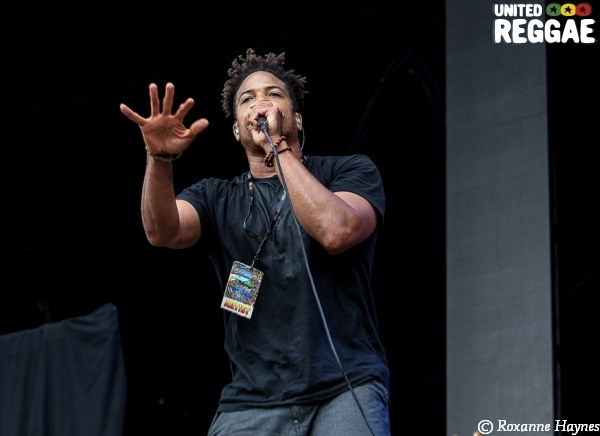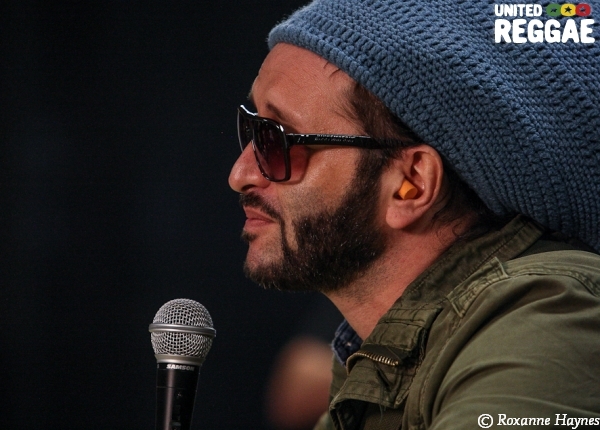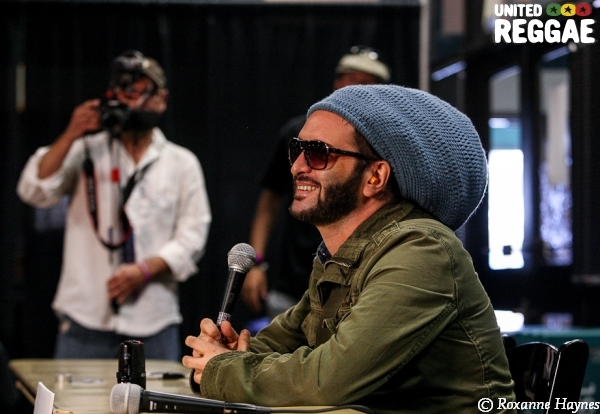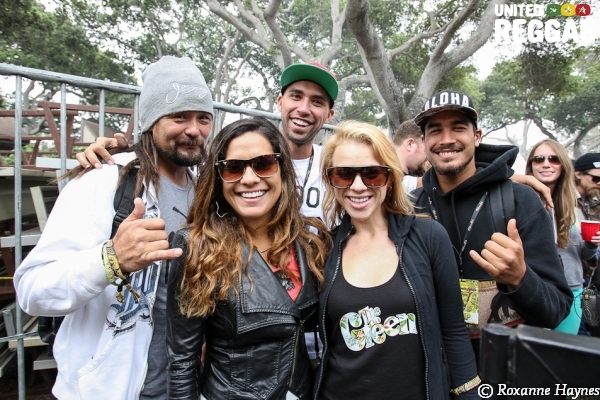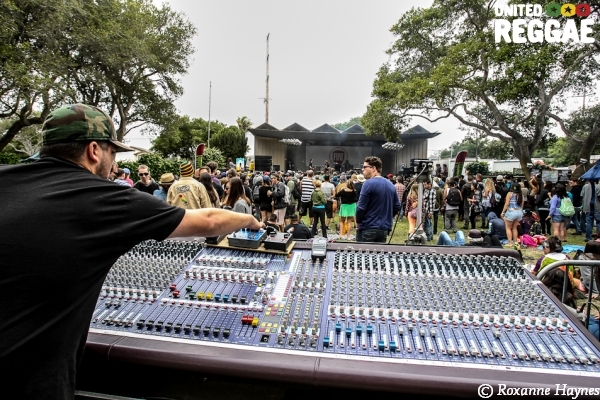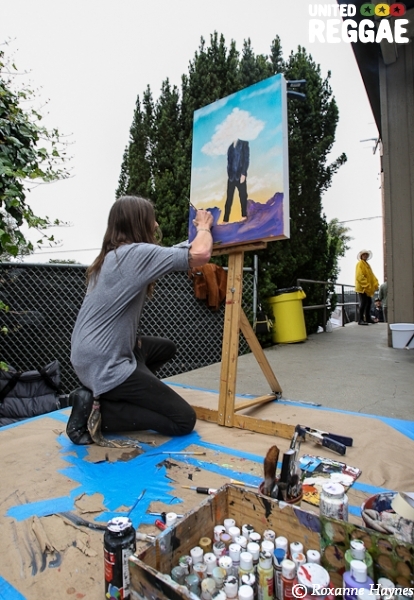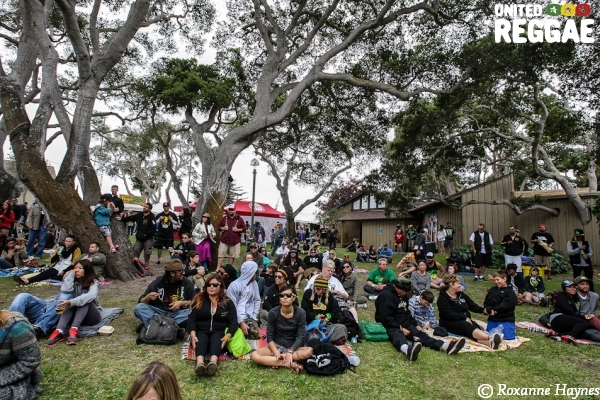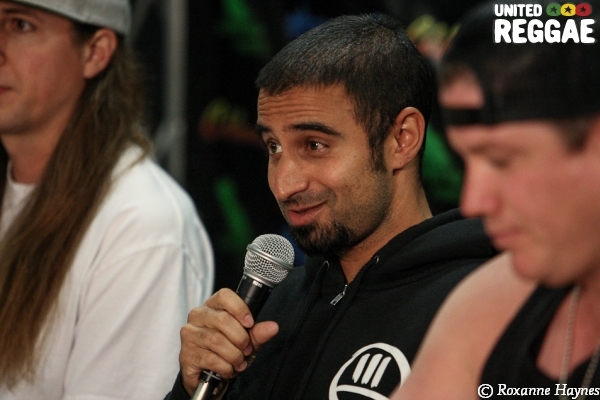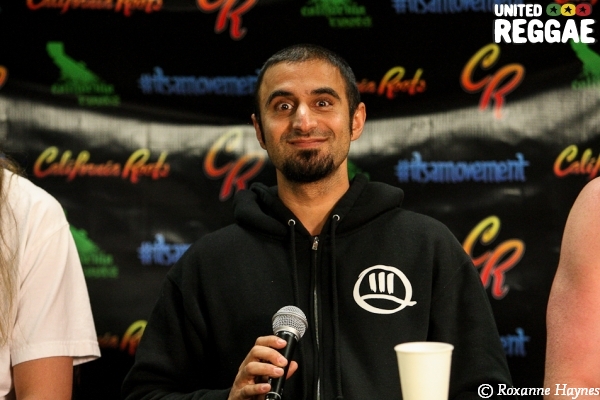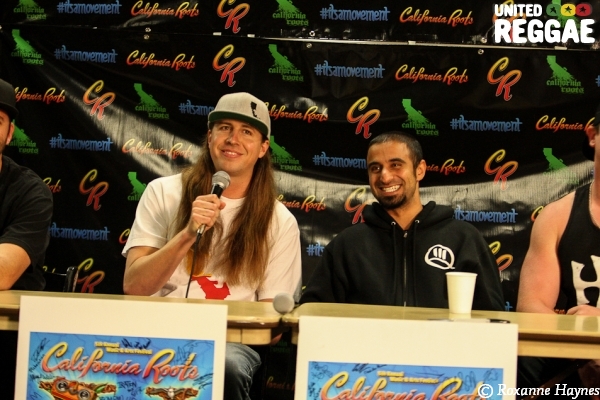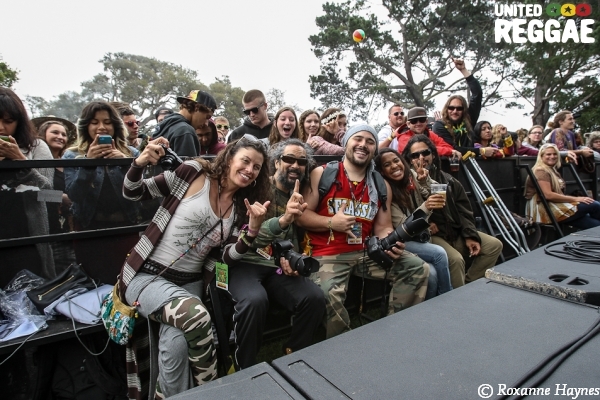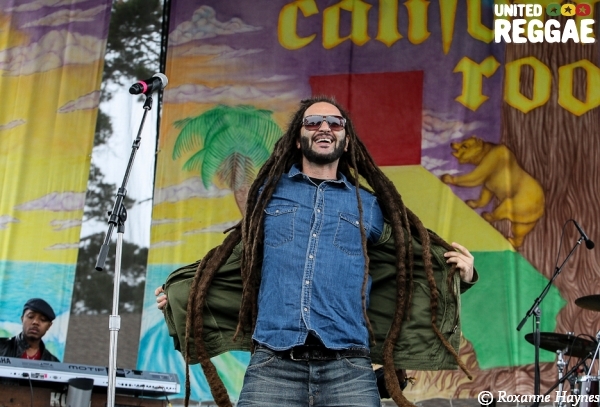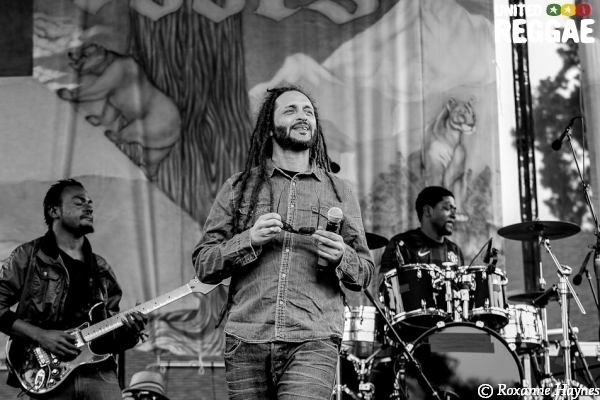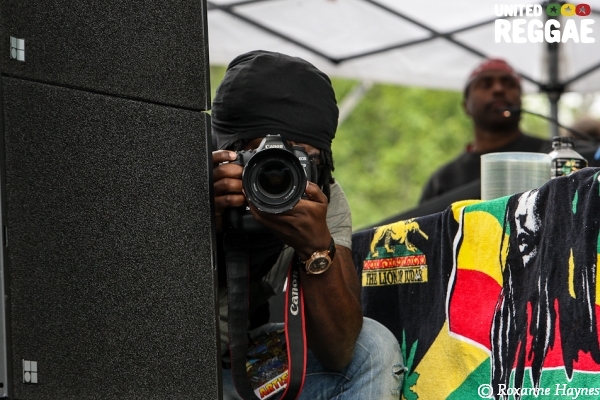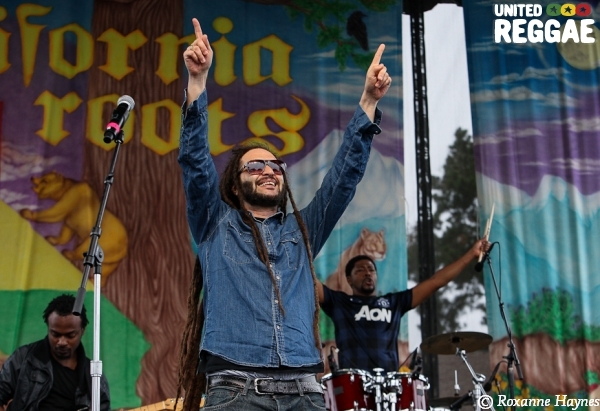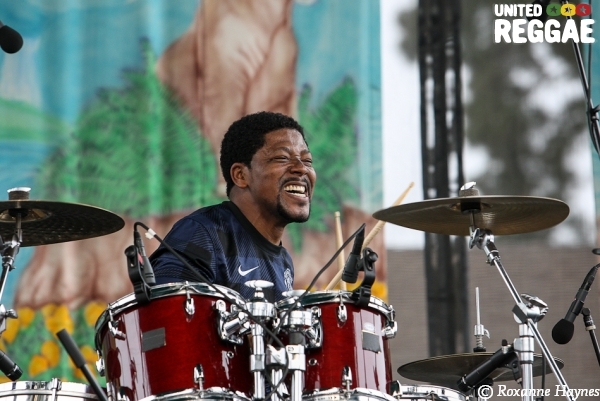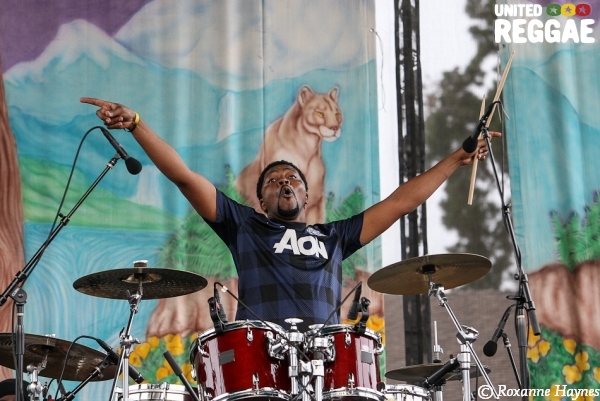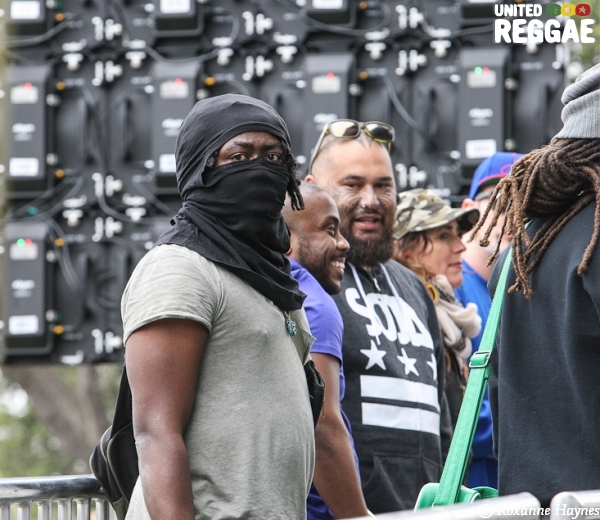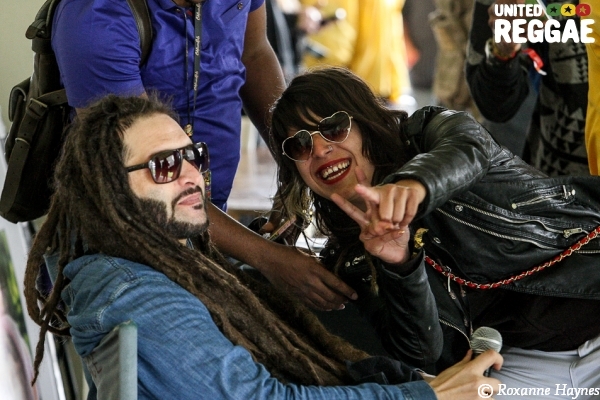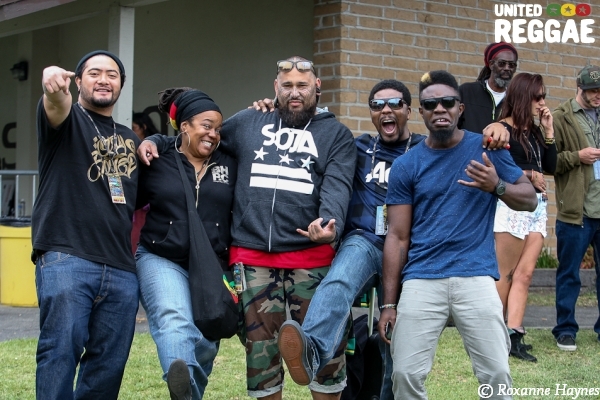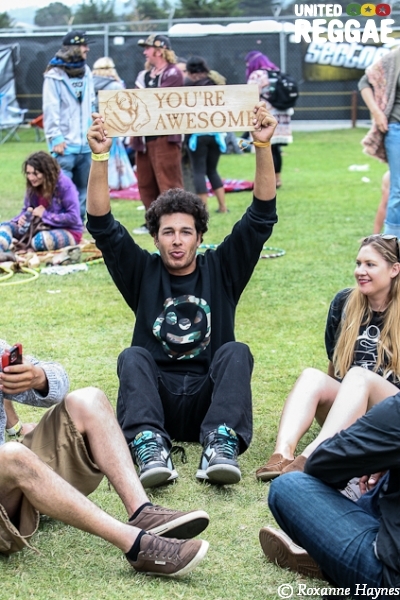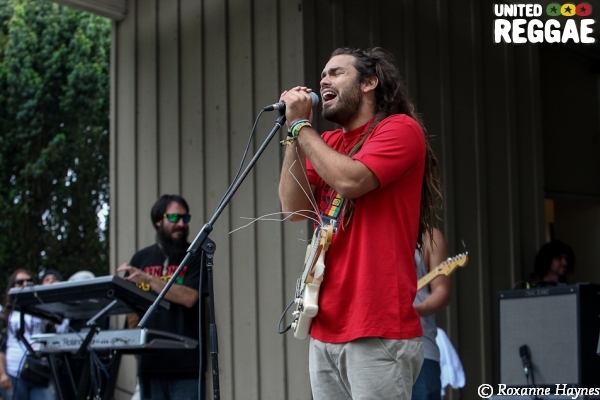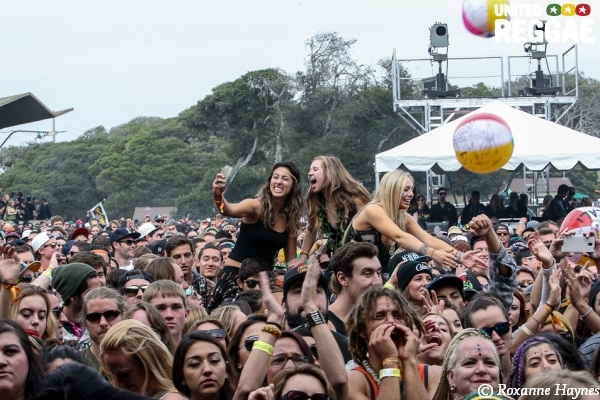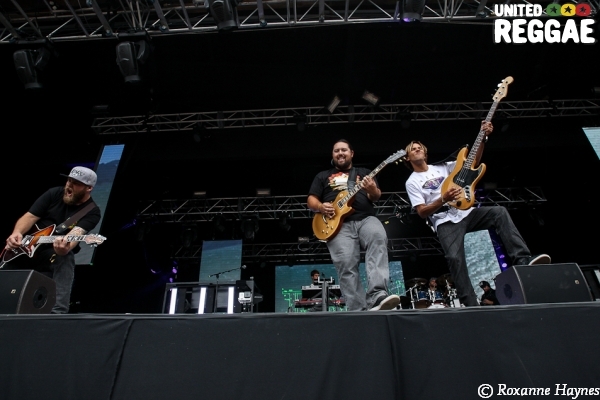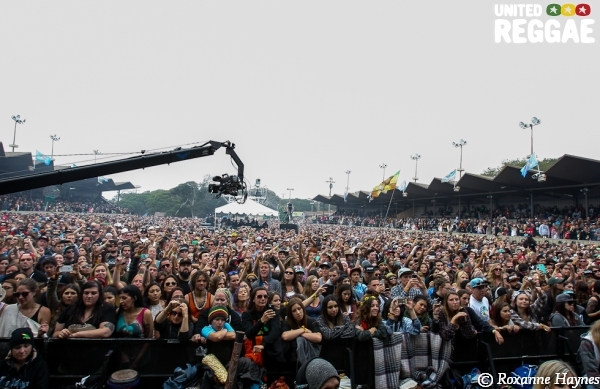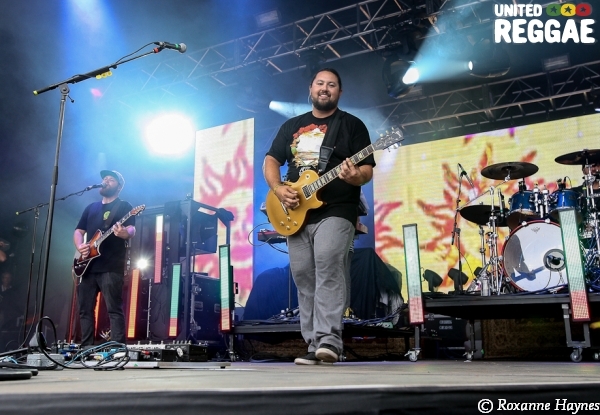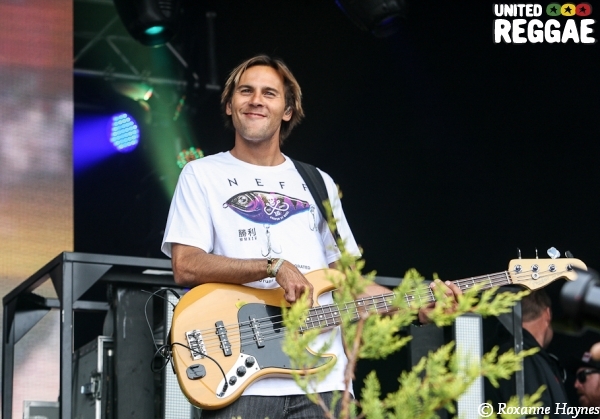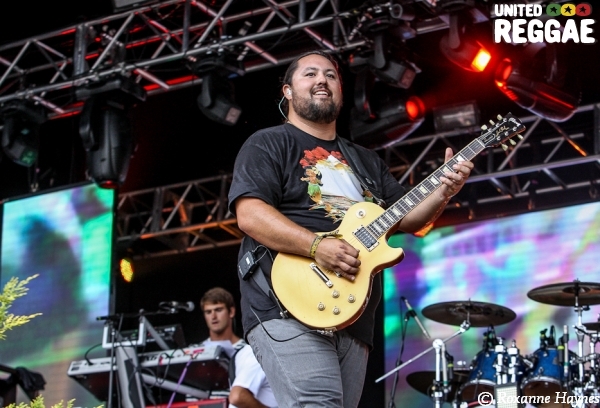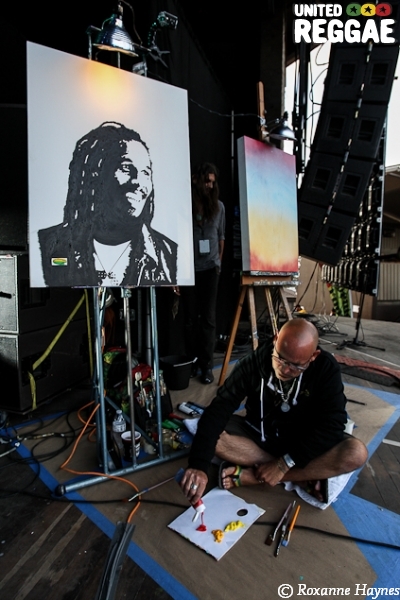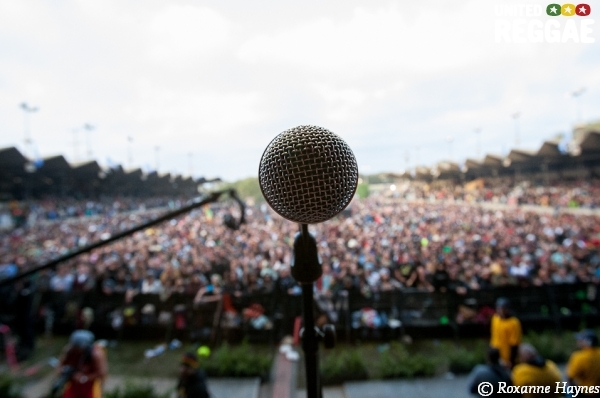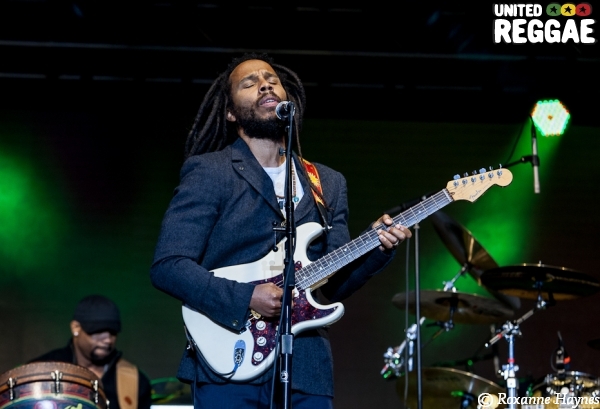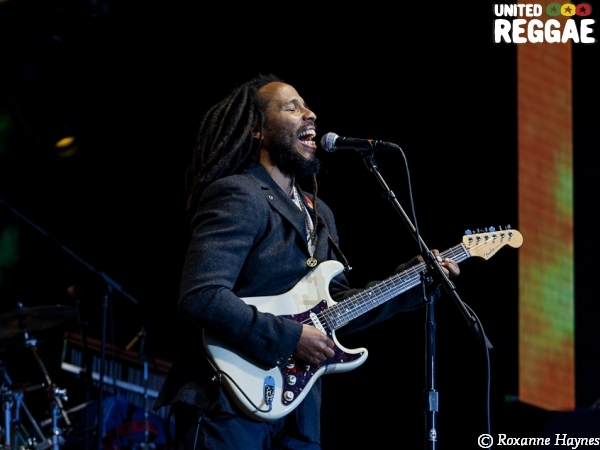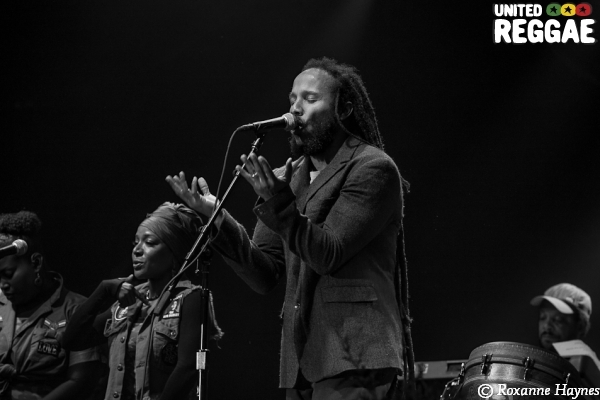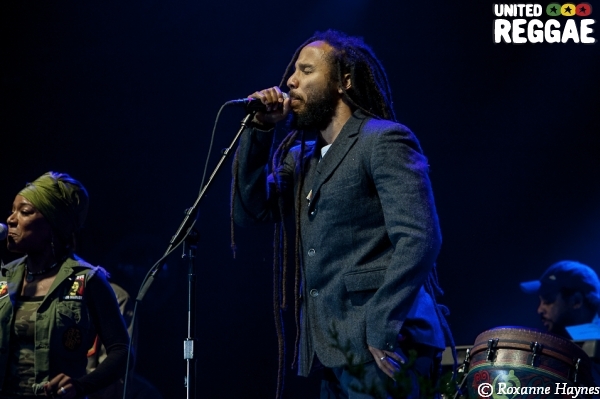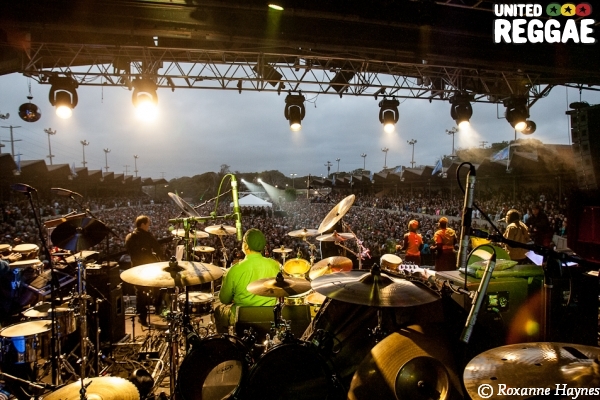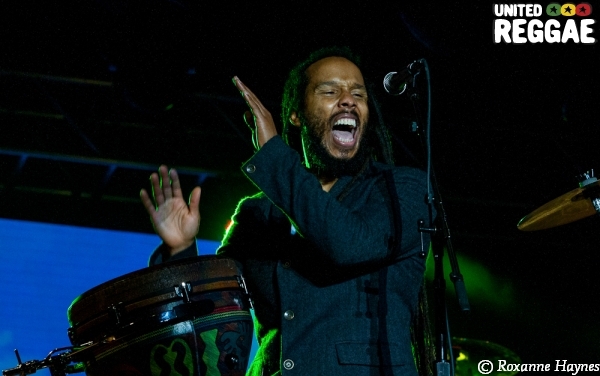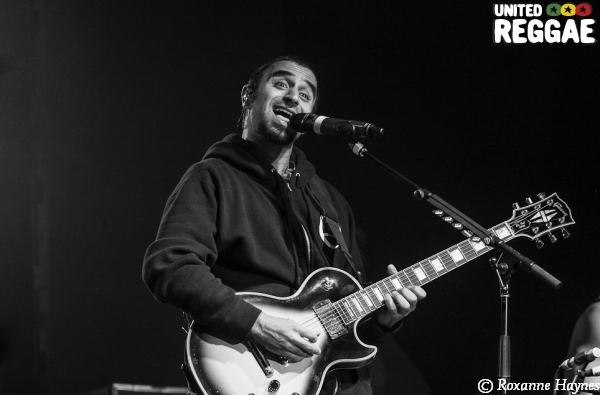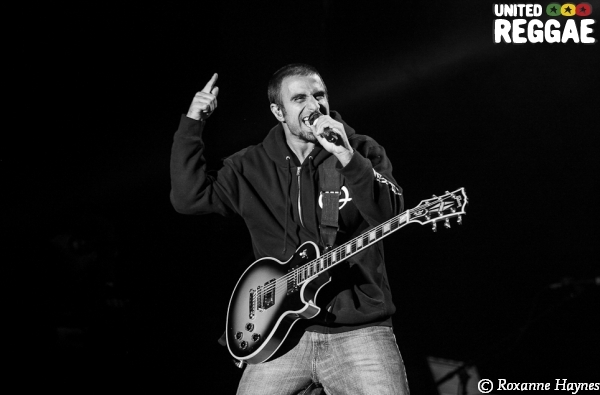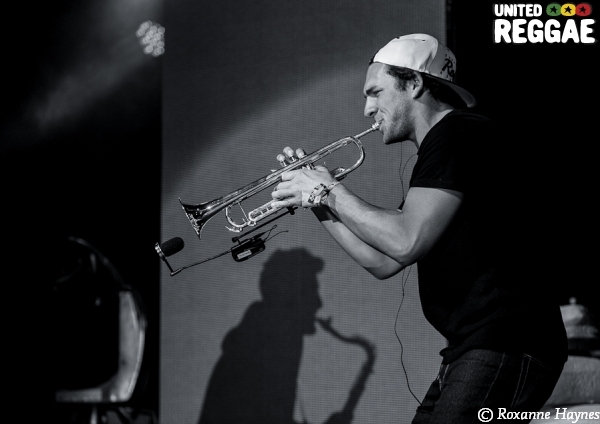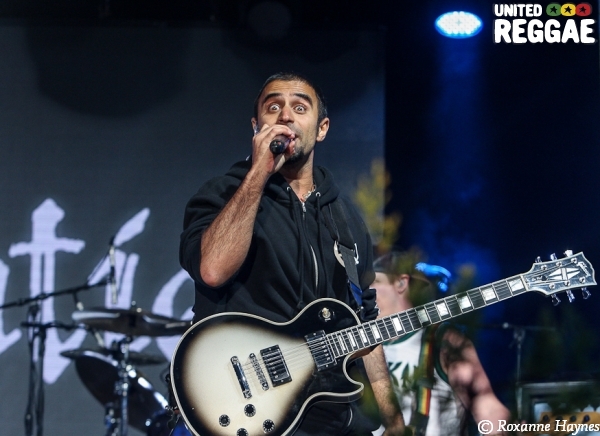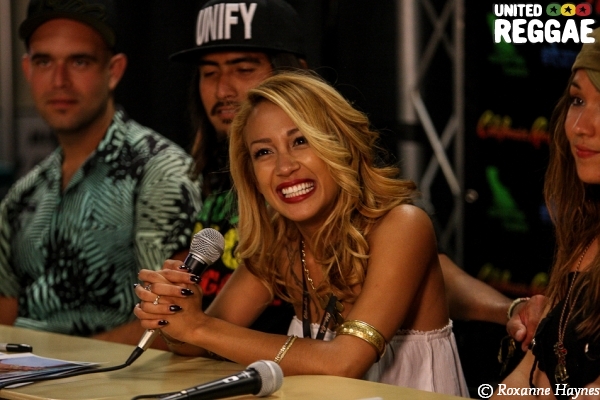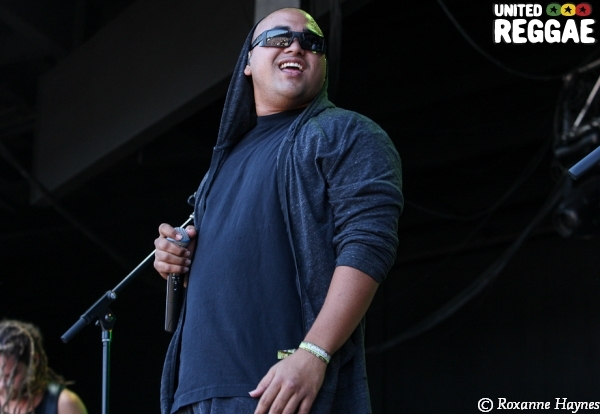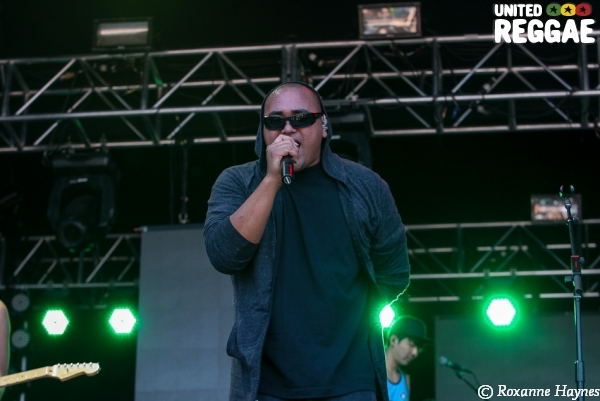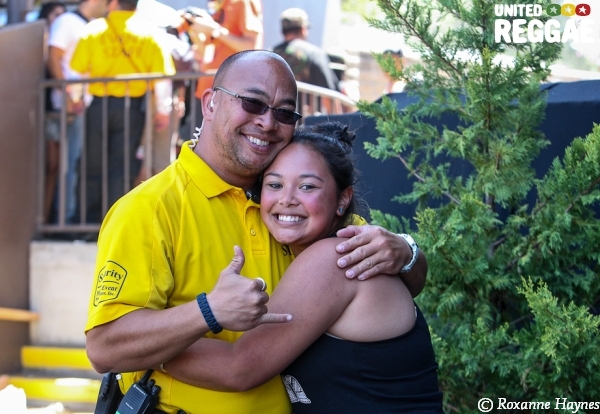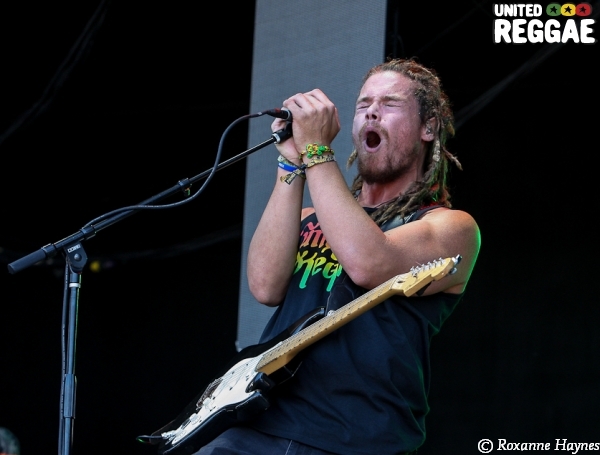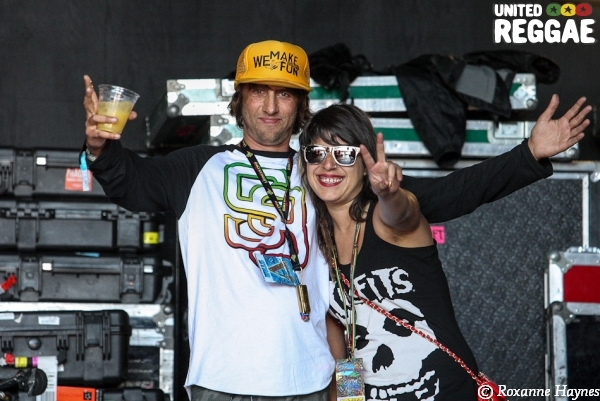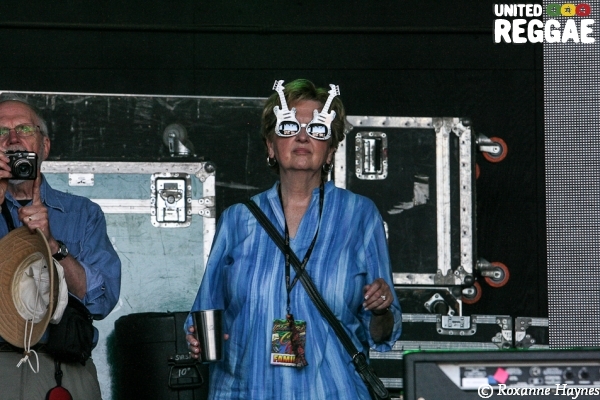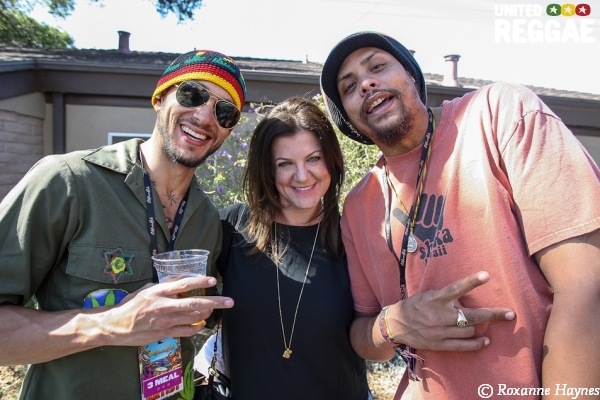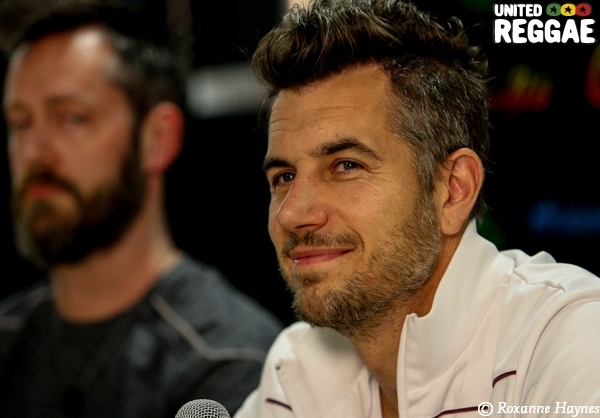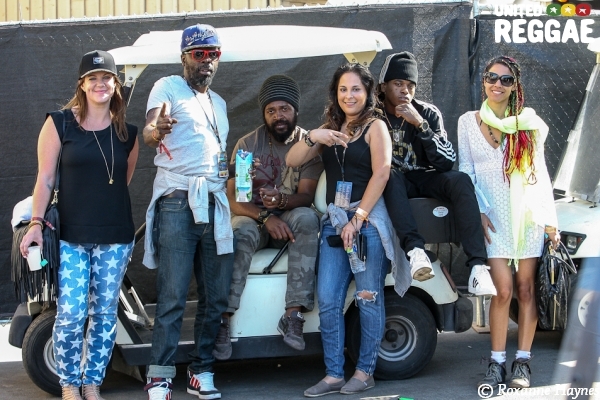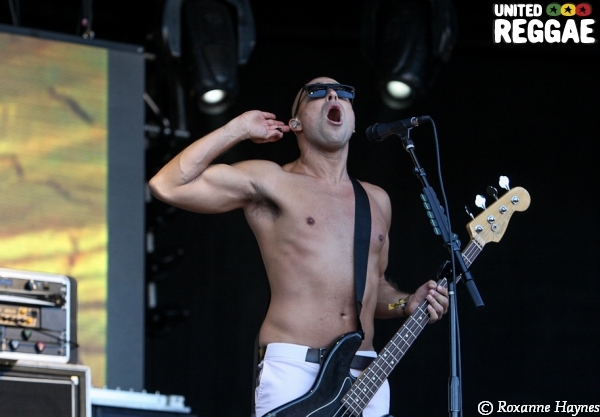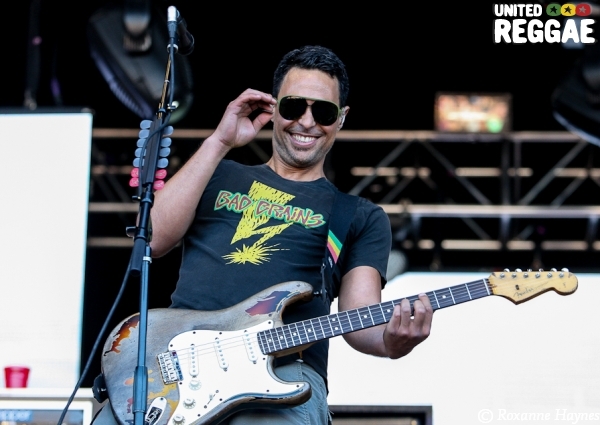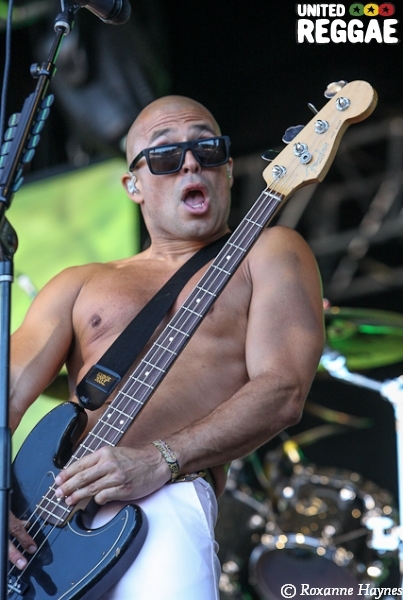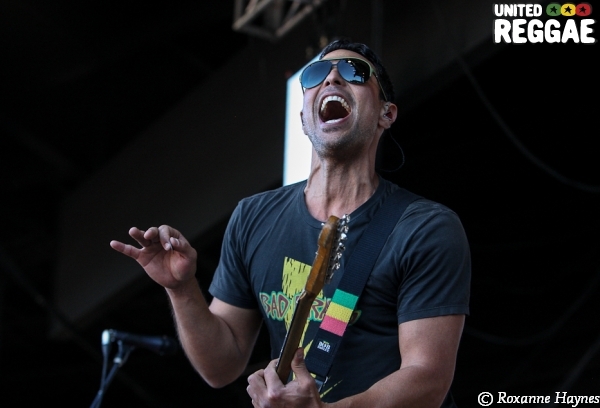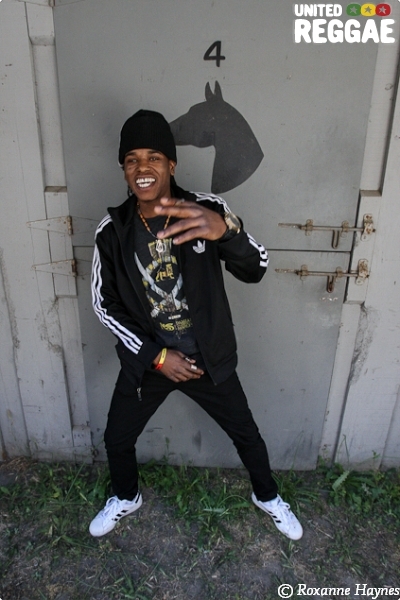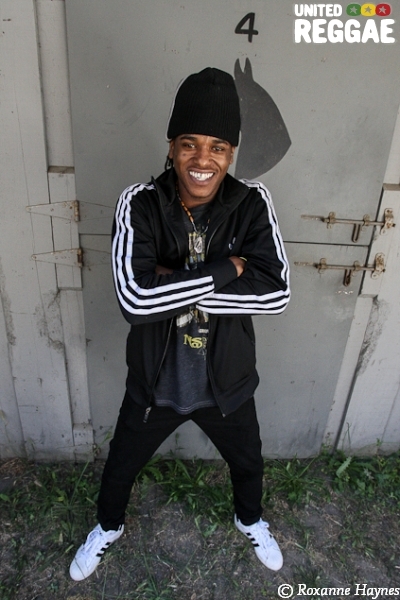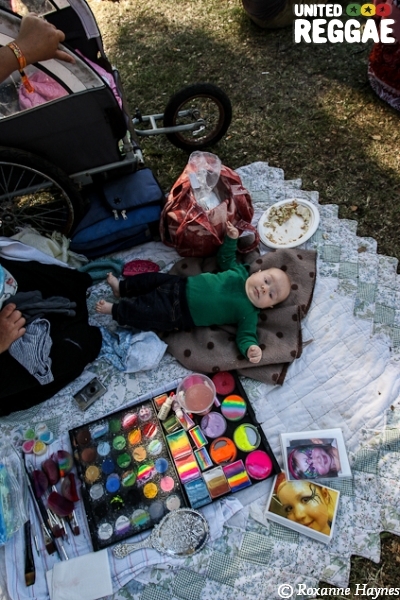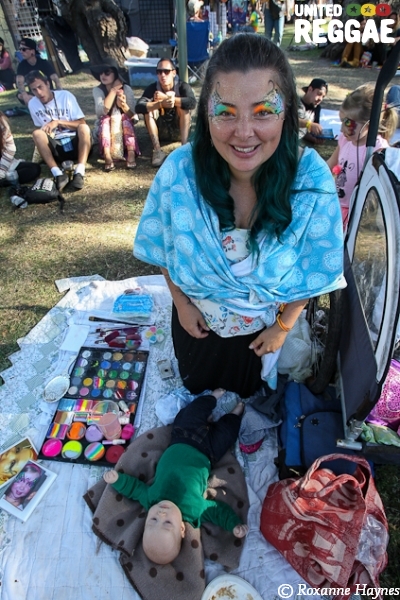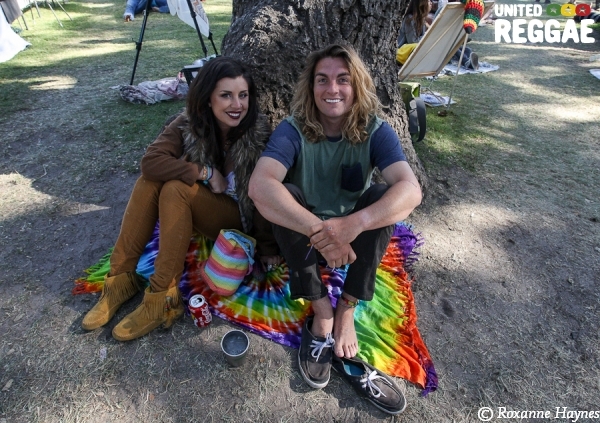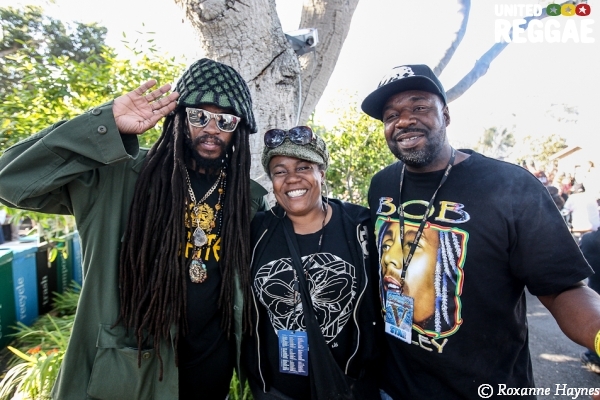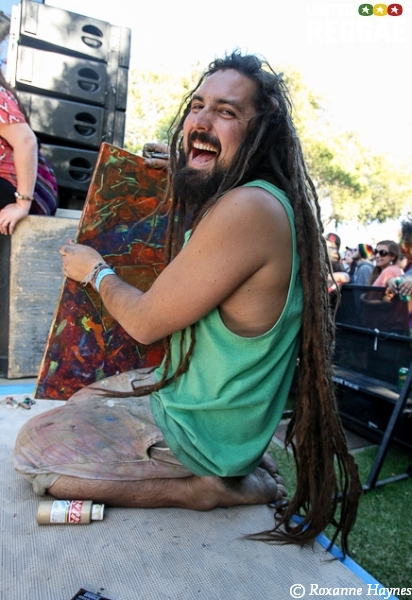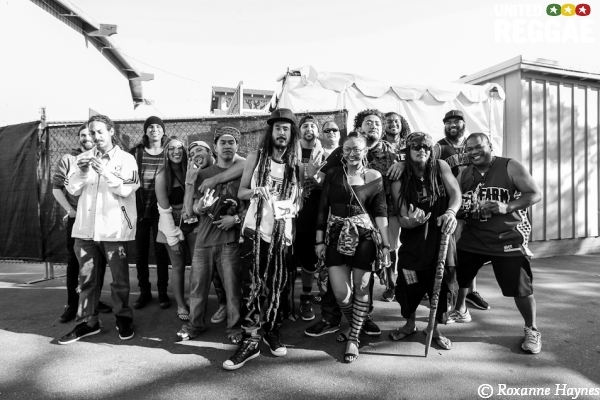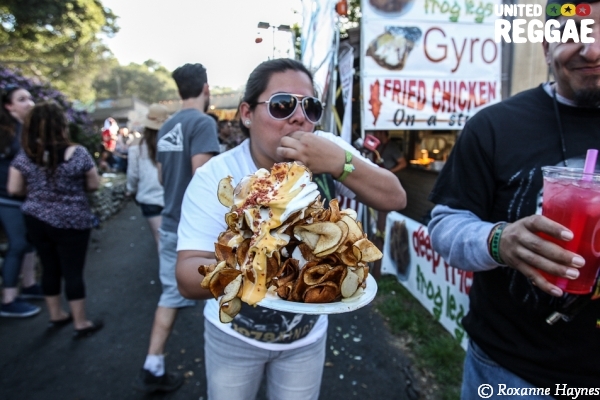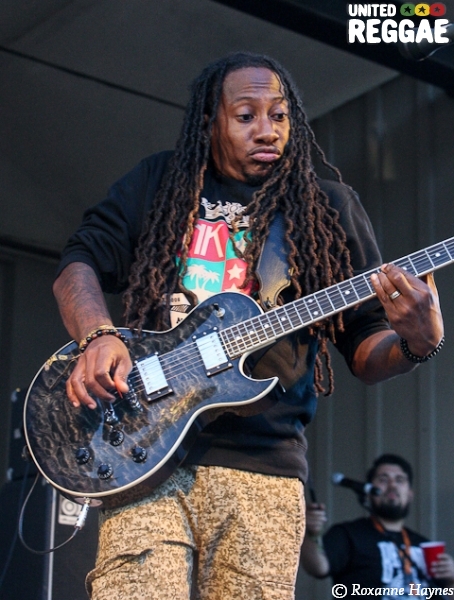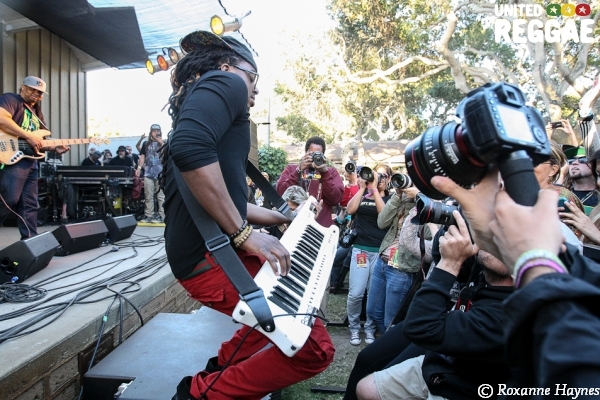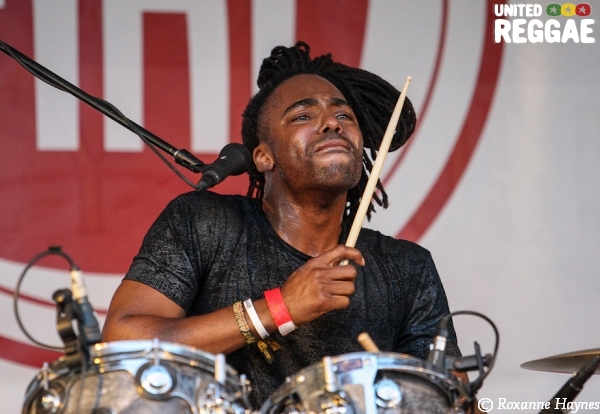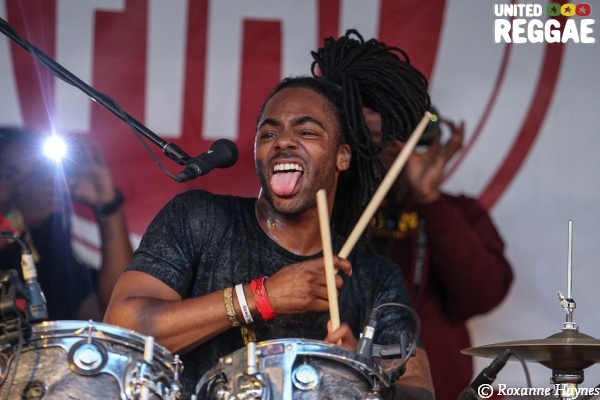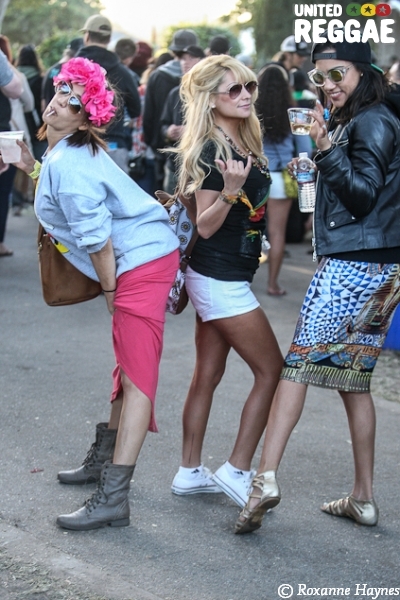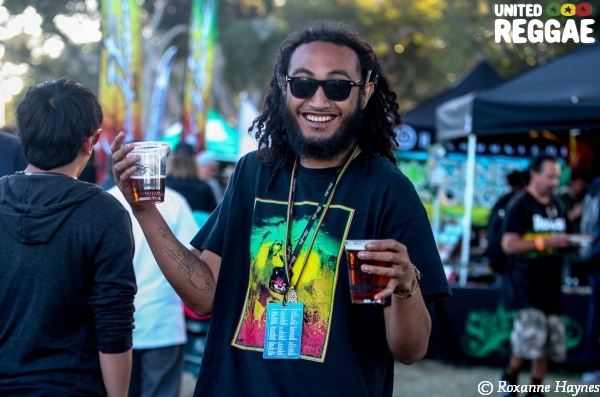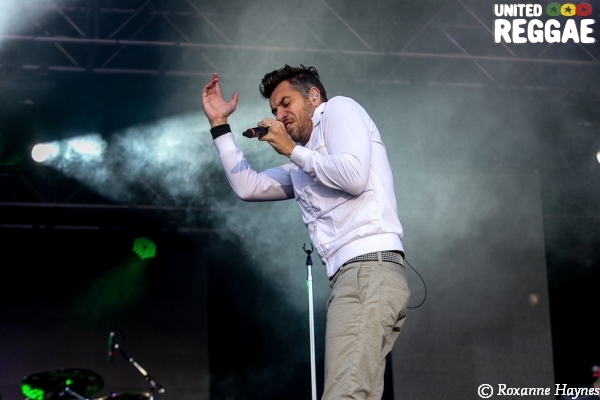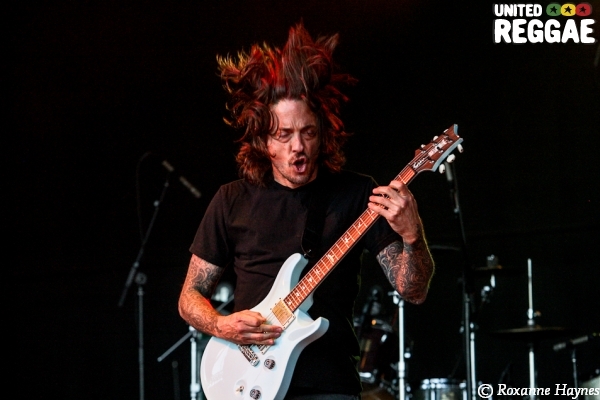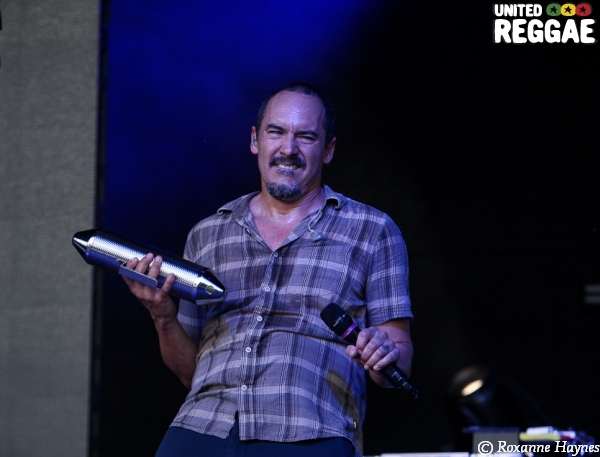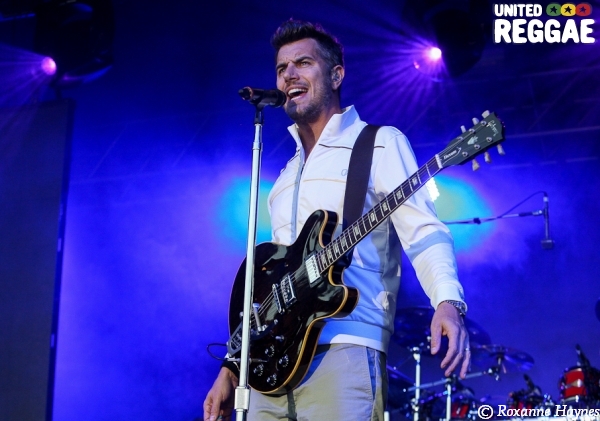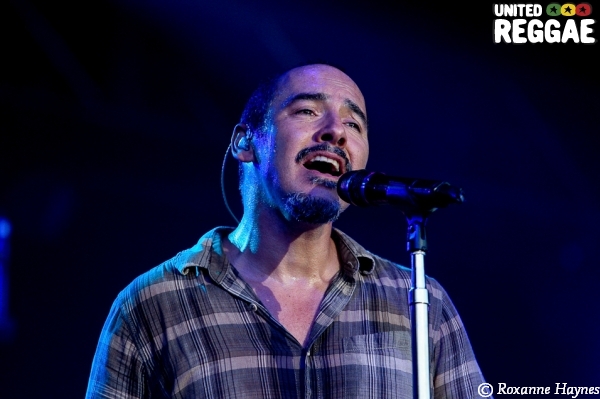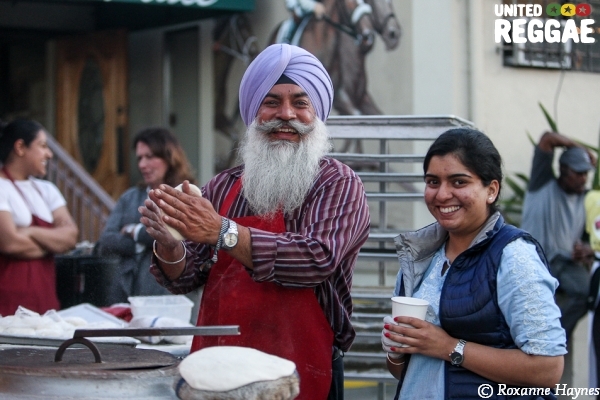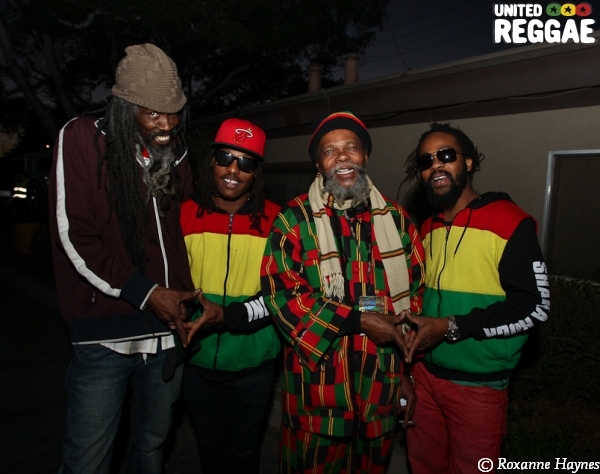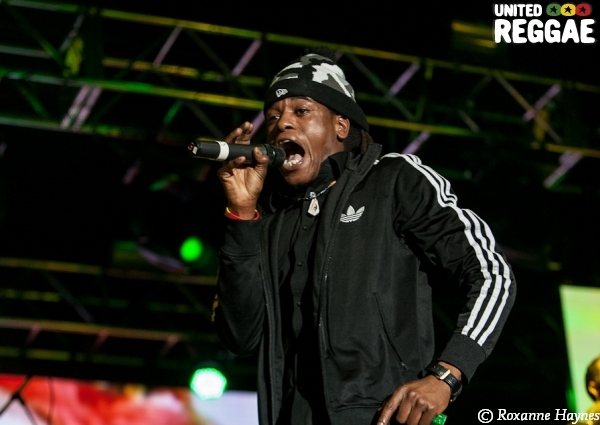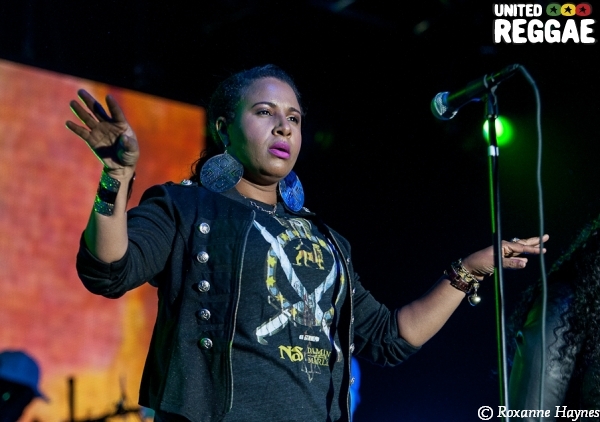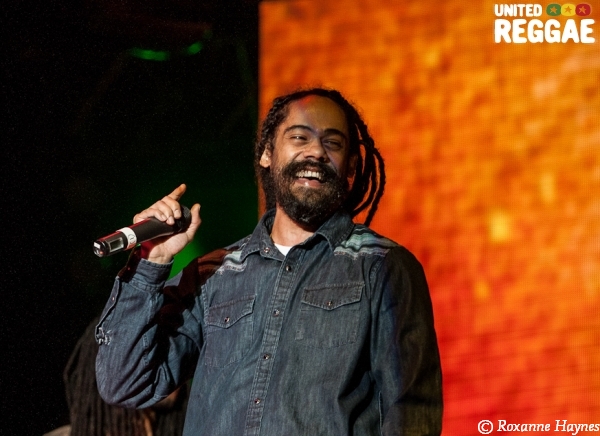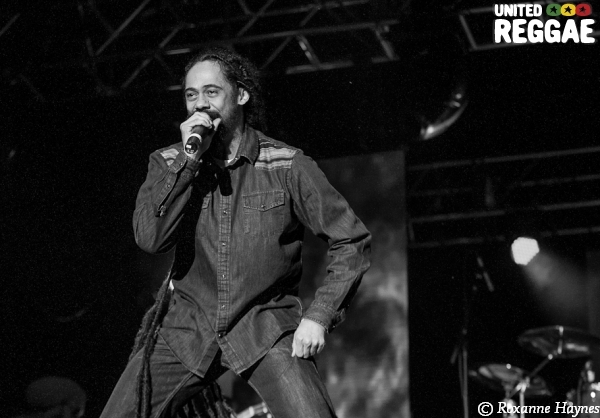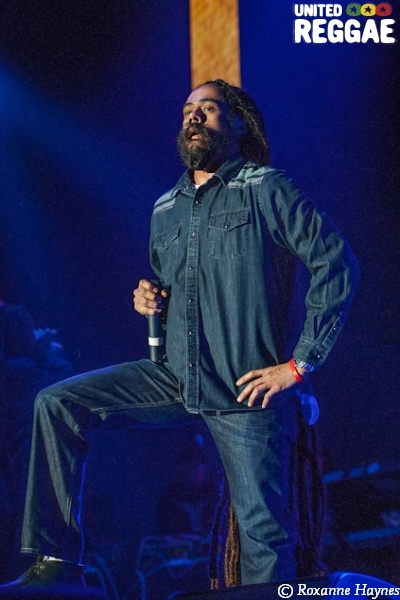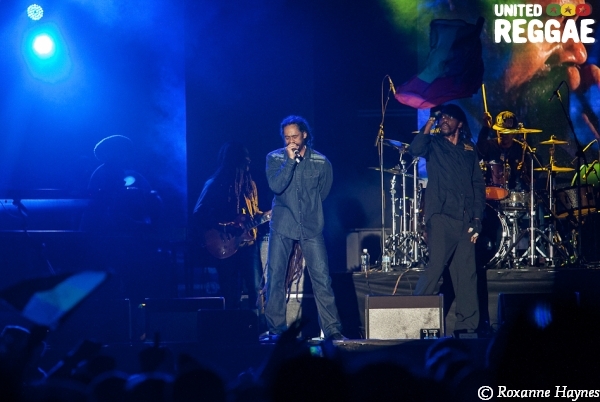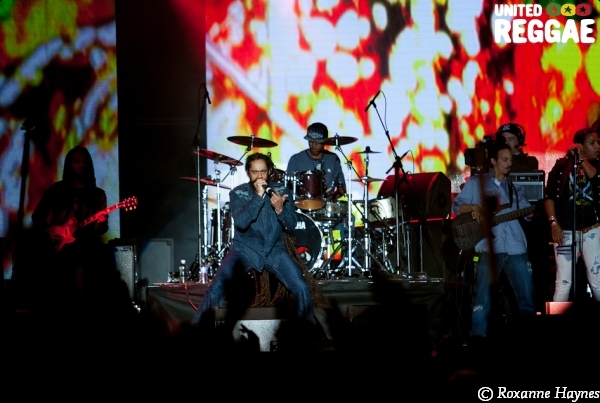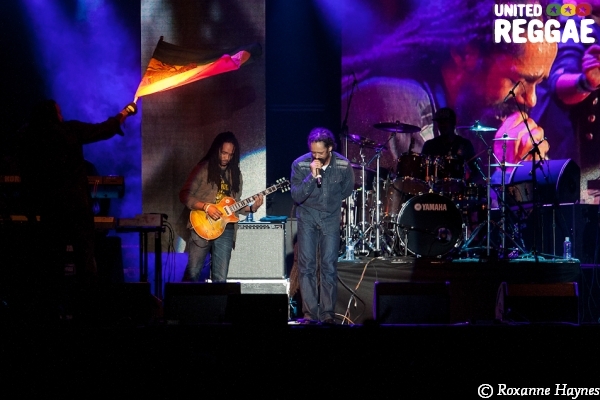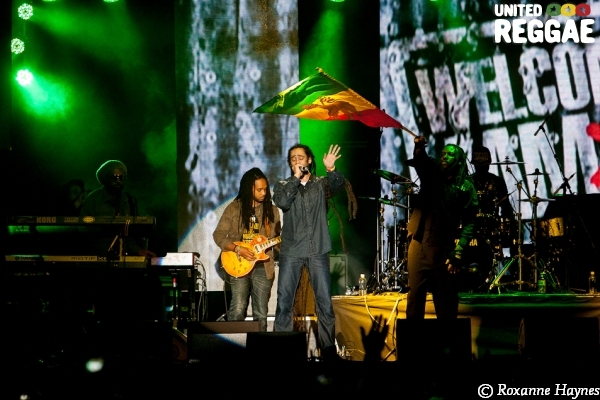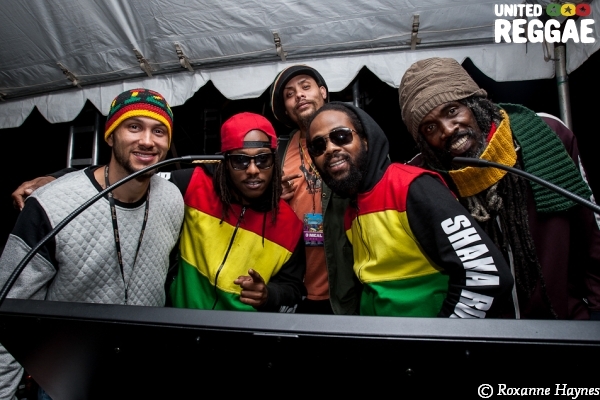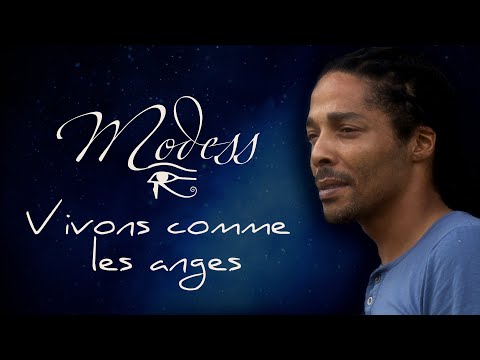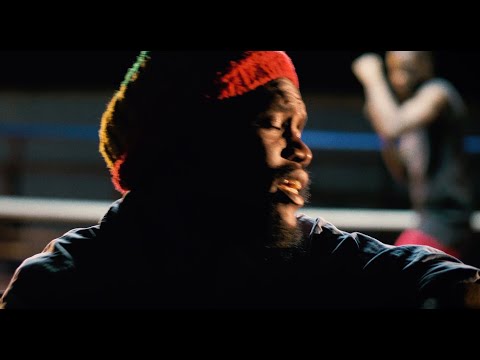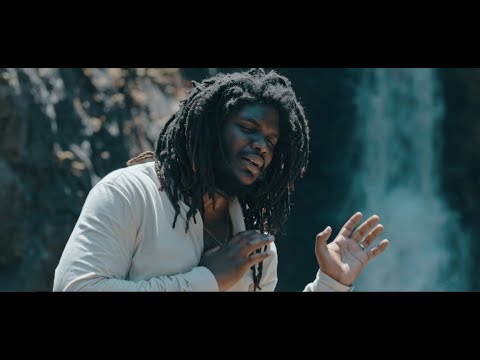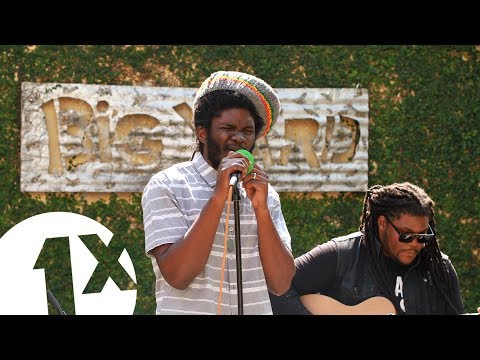Articles about reggae music, reviews, interviews, reports and more...
California Roots Music and Arts Festival 2014

California Roots Music and Arts Festival 2014
The rising of new-school reggae: Cali roots music.
It has been decades in the making, and people all over the world can dig it. But it has not been until now that California’s reggae-rock scene has turned into an international phenomenon. For generations, roots reggae has been ingrained in West Coast culture; its far-reaching influence tapping surf, ska, punk, rock and hip-hop to generate an entirely new wave of reggae sound. Cali roots, as the genre is now being called, is part tradition part progression – just like the culture of California itself.
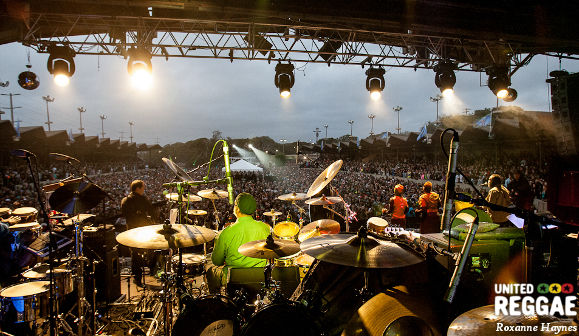
The fifth annual California Roots Music and Arts Festival took place in Monterey Bay, California on May 23rd-25th, 2014. The excitement was so widespread, the festival nearly sold out months before opening day. Festival organizers – Santa Cruz-based partners Jeff Monser and Dan Sheehan – significantly upped their game this year by opening the legendary Monterey Bowl arena to performers. Top-ranking artists from every corner of reggae music were showcased with exceptional video and sound production and thousands of wildly appreciative fans.
From the live art to the morning yoga, from the multi-cultural food stands to the counter-culture clothing vendors, the festival offerings were many. At night, mystic canopies of hundred-year-old Monterey Cypress trees were pierced with lazar lights under the heavy coastal fog. During the day, the festival was blessed with bouts of warm sunshine and cool ocean breezes.
The greatest part about California Roots Festival is the diversity of the audience. With a growing mix of reggae-influenced bands, fans of every genre from punk to ska, from roots to dub can find something they are into. With such proximity to the Pacific Islands, the West Coast has a large Polynesian population. They came out in large numbers to support artists from their homelands. The festival held nothing back when it came to showcasing accomplished island reggae bands, bringing in new comers like Maoli and The Steppas from the Hawaiian Islands, and established artists like Iration, J Boog, The Green and New Zealanders Katchafire.
On Sunday afternoon, Ohau dub rockers The Green were celebrating their triple win at the Na Hoku Hanohano awards back in their native Hawaii, including group of the year and best reggae album of the year for their release Hawai`i '13 (2013, Easy Star Records). For many of the island reggae acts, harmonizing is a central aspect of their performance, and The Green does it exceptionally well. Their performance was the most fun loving of the weekend – girls dancing with hula hoops, guys passing around the herbs. The irie attitude of the crowd was pure sunshine love.
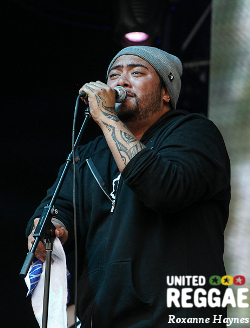 By far, the hottest island reggae act on the scene is J Boog. His insanely-catchy loversrock ballads and sweet, husky vocals charm new fans with every West Coast tour. And with limitless energy, the man seemed to materialize on stage with random acts all over the festival. After a massive performance on Friday afternoon with Hawaii’s Hot Rain Band, J Boog sang “Rude Bwoy Love” with Alborosie, jumped on stage with Brooklyn rockers New Kingston, and thoroughly impressed a crowd of 8,000+ during a feature with Friday night headliners SOJA.
By far, the hottest island reggae act on the scene is J Boog. His insanely-catchy loversrock ballads and sweet, husky vocals charm new fans with every West Coast tour. And with limitless energy, the man seemed to materialize on stage with random acts all over the festival. After a massive performance on Friday afternoon with Hawaii’s Hot Rain Band, J Boog sang “Rude Bwoy Love” with Alborosie, jumped on stage with Brooklyn rockers New Kingston, and thoroughly impressed a crowd of 8,000+ during a feature with Friday night headliners SOJA.
Meanwhile, one of the best kept secrets happening at West Coast festivals this summer is the emergence of Latin American reggae bands. From the South American beaches to Southern California’s border lands, the roots reggae pioneers of “reggae en Español” are getting some well-deserved stage time. And with California’s Latino population hitting 40%, it is time for the people to take notice.
The “Razteca” movement began in the early nineties with basement soundsystems in Mexico City. The word originates from “Ras,” meaning prince, and “Azteca,” meaning child of the sun. Mexican reggae bands hit a chord with millions of disenfranchised youth coming to terms with the government’s racist and classist oppression of native and mixed peoples. Early bands formed from the foundations of reggae. But they kept the traditions of their native Latin sound, mixing in the rhythms of salsa, cumbia and son. Those bands are now passing the torch to young Raztecas who are continuing the message and the music.
North of the border, the B-Side Players have been fusing reggae and ska with the sensual rhythms of salsa and cumbia for decades. At their press interview, after an awesome show Friday afternoon, singer Karlos Paez reflected on the diffusion of the Razteca movement in the U.S.:
"People want to be a part of something, to be a part of the culture, and to take pride in something. The Razteca movement is strong – there are so many bands. But it’s not that easy to play here. There are visa problems and a lot of politics. The people need to start supporting this music - it is huge all over the world, and the United States is behind in knowing about the music."
Even without mainstream popularity, the accessibility of the B-Side Players’ world music style has produced something of a cult following. They opened with a mash-up of well-known B-Side rhythms, running through upful rocksteady tunes with a full horn section. Their high-energy reggae cumbias and fusion of Latin, funk, and jazz is hard not to groove to – everyone was dancing, even the sound guys. Frontman Karlos Paez, draped in turquoise stones and earth metals, sang in both Spanish and English. And his highly political and justice oriented message was not lost on new fans. Closing out with a cover of “Could You Be Loved,” the Latino dread from San Diego reminded everyone to believe in the fifth element, because we are all children of the sun.
On Saturday, Costa Rican band Ojo de Buey lit up the tiny Original Stage. Tucked into a small grassy bowl between the two main stages, the Original Stage once hosted all the bands when the festival first started five years ago. Now considered the up-and-comers arena, some of the weekend’s best bands played on it. Between the trombone player’s mind-blowing solo on a giant conch shell, to the super tight blending of salsa and reggae rhythms, they had and intimate crowd transfixed on their Spanish vocals.
The endless variety of global reggae was further illustrated by the soulful performance by Northwestern band Nahko and Medicine For the People as breaking down any leftover barriers. They defy classification – every song has its own organic energy with musical versions somewhere between acoustic-warrior folk and tribal roots. While their sound is at a glance, miles from the Jamaican reggae culture, in actuality it is right on point. What all of these bands have in common is, the collective social consciousness: one love, one heart, and one people.
Likewise, roots champions Groundation defy categorization. The music’s bedrock is reggae, yet carries their tunes through wild jazz improvisations to instrumental heights few reggae bands reach. Their new album A Miracle (planned for late 2014) features Judy Mowatt and Marcia Griffiths of the I-Threes on lead vocals as well as artists from the Ashe Performing Arts Company in East Kingston, Jamaica. When asked in the press tent about the recording legends that have lent inspiration to their albums, frontman and university professor Harrison Stafford drove the message home:
They are the reason we are playing the music that we play. The fact that we record with Ijahman, Pablo Moses, people like U-Roy, Abyssinians, Ras Michael - it shows us the music is about love and equality, and about a better world, trying to create a better tomorrow. That fight is not something you are going to win in your lifetime. These elders show us that there is no end finish line. It is a lifelong dedication to a music and a purpose. The music and the mission of reggae is a lifelong commitment.
Somewhat less roots, but equally conscious, were performances by hip-hop bands Zion I from San Francisco and Panama-bred, Oakland-based Los Rakas. Both powerhouse duos spoke on the same crucial messages of righteousness and justice. Conscious hip hop has deep roots in California and many people live by its reality.
Much like the West Coast’s older reggae festivals, whose decades of tradition bring back generation after generation of fans, California Roots Festival has established itself as a vital force for the perpetuation of new-school reggae music.
Self-styled dub rockers Stick Figure were the biggest surprise amongst new bands on the scene. They are fronted by lead singer Scott Woodruff, whose previous eponymous solo project produced four full-length albums before he left his native East Coast for warmer West Coast vibes. Woodruff has impressive vocal range and sharp production skills (his albums are all self-produced), yet he wears those California influences on his sleeve. Songs mirror the skank rhythms and echo-vocals of Southern California’s most famous reggae dub bands like Sublime, Long Beach Dub All Stars, and their protégés Slightly Stoopid. Still, their original tunes are upful and catchy in their own right. Friday’s high-energy performance was inspiring, matched with young fans who knew every lyric and industry folks scratching their heads as to why they had never heard of them.
Other notable bands on the bill included Pepper, the descendants of Southern California ska-punk-reggae. After two decades of being the soundtrack of surf and skateboarding culture, they rock harder than anyone. Another crowd favorite was 311. While stylizing their set with deep dub interludes and funky reggae breakdowns, they played a lot of tunes off their latest rock release STER3OL1TH1C (2014, 311 Records). Alternative and grunge rock have had a major impact on West Coast music. Bringing these hard-hitting, super energized bands to the masses deepens the appreciation for the artists who molded a foundation for the new Cali roots bands to stand on.
Vintage roots rockers The Expanders reasoned on the subject during their press interview:
When we talk about the development of the [Cali roots] genre, the first thing I think of is, how many people have been introduced to reggae through this scene? It is a really powerful thing - it is crazy to see 18 and 19 year kids crazy about the roots.
Further proving Cali roots’ massive popularity, Southern California reggae-rockers Rebelution headlined Saturday night. The band packed the Monterey Bowl beyond capacity and fans spilled out into vendor corridors, forming dance parties engulfed in hazy smoke and laughing friends. With a full decade of experience behind them, Rebelution’s lyrical maturity is beginning to shine. Once focused on tunes about girls and weed, signer Eric Rachmany is speaking on heavier topics such as racism (he is a Persian Jew) and global oppression, drawing directly from the heart of the roots-reggae tradition. It is clear that this is one band paving to road for reggae’s new wave.
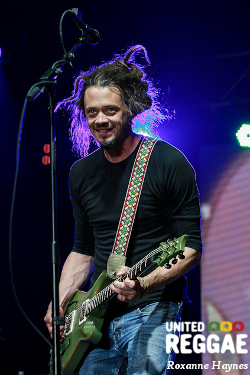 While Southern California produces major chart-topping acts, Washington D.C. natives SOJA have become the most hyped reggae band in the United States. They blend the story-telling traditions of folk Americana with the gritty resistance of urban decay. The result is an accessible, conscious sound that resonates across cultures and borders.
While Southern California produces major chart-topping acts, Washington D.C. natives SOJA have become the most hyped reggae band in the United States. They blend the story-telling traditions of folk Americana with the gritty resistance of urban decay. The result is an accessible, conscious sound that resonates across cultures and borders.
Just before they came out on stage Friday night, the crowd was hushed. Lead singer Jacob Hemphill was beaming from the stage as he waited out a crucial instrumental intro for the love song “Sorry.” Following the powerful vocalizations of “I Don’t Want to Wait,” he told the crowd how incredible it felt to perform on the same stage that Jimi Hendrix lit his guitar on fire, during the once-only Monterey Pop Festival in 1967.
Half-way through their set, everyone in the band grabbed a giant marching drum and proceeded to smash through an epic drumline battle. It was thrilling, and almost took the show, but not before guitarist Trevor Young lit his guitar on fire in tribute to Hendrix’s legend.
Holding the reins between the new roots generation and the veteran entertainers are artists like Alborosie. Although more deserving of an evening timeslot, “Pupa Albo” truly shined on Saturday afternoon. Before the third song dropped, the entire amphitheater was filled with people. When he started running the stage with “Police In Helicopter” and “Informer,” the audience went wild. The whole performance was a mash up of hits tied to instrumental breakdowns of “Kingston Town”. His repeated disappearing acts must have charmed the audience because they refused to let him leave the stage, even after his encore. Alborosie charmed thousands of fans with his upful attitude and huge smile - it was one of the most sincere appearances of the festival.
Veteran performers Steel Pulse played a lot of classic tunes to the infinite joy of the crowd. Newer songs were also received well, including “Black and Proud” and “Whirlwind Romance.” David Hines wore an outrageously colorful West African agbada with giant white Oakley shades. Matched with clean white Adidas kicks, he has got to be one of the most radically fashionable men on the road. The band opened with “Blues Dance Raid” and “Rally Round” before keyboardist Selwyn Brown took to the mic to sing Damian Marley’s partn on “No More Weapons”. “Roller Skates” had fans singing with delight. When Hines’ son Baruch came out at the tail end of “Drug Squad,” people didn’t know what to think of the hip-hop youth. But he laid his rhymes down well to receive massive applause. The band is one of the most well-known acts in reggae history and they never fail to impress.
It took five years for the Marleys to consider performing in Monterey Bay, and when they did, they proved crucial links to the festival’s legitimacy. Both Ziggy Marley and Damian Marley gave outstanding performances, not only deepening their fan bases but raising the bar significantly for festival organizers. It will be tough to top this year’s acts.
Ziggy Marley opened with “Love Is My Religion” and “Wild and Free,” to an overflowing stadium. He picked up a guitar for “Fly Rasta,” while U-Roy’s voice bellowed over the speakers. Then he had the audience jamming to the pop tune “I Don’t Want to Live on Mars.” Both songs are off his recent release Fly Rasta (2014, Tuff Gong) and seem to take Ziggy in a whole new direction. But looping back to classics like “Conscious Party” and “Tomorrow People,” brought back the Ziggy every knows the words to. He looked sharp in a tweed jacket and wooden prayer beads, his bandmates looked sophisticated in silk Rasta ties. For anyone paying attention, this is a man who demonstrates veteran status with character and grace.
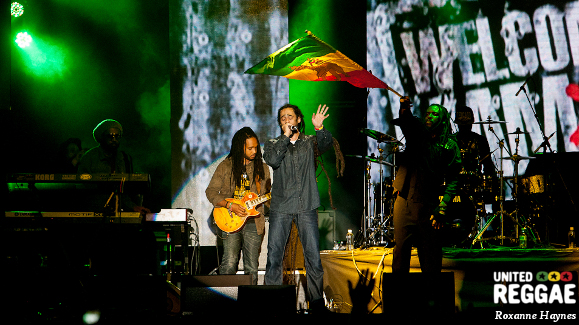
Sunday’s headliner was the most anticipated performance of the weekend. The arena was bursting its capacity for nearly 30 minutes after Damian Marley’s scheduled performance time. The audience was getting anxious and it seemed even the soundsystem had no idea what was going on. It wasn’t until the low rumble began to grow into a loud roar from the 8,000+ fans b, that Damian’s guest Black Am I came out on stage. The newest Ghetto Youths recruit earned instant respect from the crowd for donning an Oakland Raiders beanie.
When Damian Marley came trodding out, under the video backdrop of Haile Selassie I, his long locks swayed in righteousness. He opened with “More Justice,” and it must have gotten the loudest crowd response in the history of the Monterey Bowl. As one of the most prominent cross-over artists in reggae, Damian has earned respect from hip hop fans, dancehall fans, roots reggae fans, and just about everyone in between. He destroyed it with hits like “Promise Land,” “Welcome To Jamrock,” and “Patience.” Finally, to put an end to what was by far the baddest performance of the festival, Damian asked everyone to pull out their lighters and cell phones during “Road to Zion.” The stadium came alive with tiny white lights like a moving sea of stars. It was a stunning end to another awesome California reggae festival.
Comments actually desactivated due to too much spams
Browse by categories
Recommended Articles
Latest articles
Recently addedView all
© 2007-2026 United Reggae. All Rights Reserved. Reproduction in whole or in part is prohibited. Read about copyright
Terms of use | About us | Contact us | Authors | Newsletter | A-Z
